We left Rouen on a bright morning after enjoying a coffee and baguette at a local brasserie. We were looking forward to a relatively easy ride of 45 kms, with a climb from near sea-level to about 200m and only a few ups and downs. It was a warm sunny ride through farmers’ fields and Patti stopped to sprinkle some of her mum’s ashes on the poppies on the side of the road. We also managed to find a France postbox so mailed some postcards. (So old school.) There were some quiet cemeteries to pique our interest, and church bells.
The only pre-ordained point-of-interest on our route was a ruined castle at Blainville-Crevon, built in the 13th Century and destroyed during the revolution in 1798. The present restoration (excavation) was completed in 1967, and it is the site of an annual jazz festival, the Festival Archéo Jazz. While John walked the site, I chatted with a curious local octagenarian. He was anxious to let us know that we were in for a lot of hills and was happy to see that we had batteries. At least, I think that’s what he said. The whole conversation was in French.
Forges-les-Eaux began as a thermal spa town where people came from all over to ‘take the waters’. The thermal activity stopped in the 1990s but there is still a big casino.
We checked into our hotel, ‘Le Continental’, which was basic but was likely more grand in days gone by. In fact, it was used by the British in the First World War as a military hospital, and by the Germans to house their officers during their Second World War occupation. Our trikes were safe and sound and dry in the hotel’s tool shed for the night.
Our twenty minute walk into town was disheartening as the street appeared to be abandoned but turning a corner revealed a busy centre-ville. We were hungry, and the two or three boulangeries didn’t fit the bill. We ended with with a fantastic plate of kebobs from Mister Kebob. Perfect!!!! After that feast we couldn’t imagine having an appetite for dinner so we stopped, instead, to pick up take-out cheese, duck rillette, tomato salad and rice pudding. We visited the Resistance Museum, and marvelled again at the spirit of the French people during the second World War. “L’armee des ombres.”
“This exhibition has not been created with feelings of hate and revenge but rather with the aim of remembering and explaining what was a tragic period in history.
Do not leave here detesting Germany the country that produced honourable citizens such as Goethe, Schiller, Heine, R. Strauss as well as Beehoven, Bach, Schumann…
What we should detest are dictatorial regimes, especially Hitler’s Nazism, because they enslave man and suppress him.”
Mark Perrin. Member of the French Resistance. Deported to Buchenwald Concentration Camp. Identification tattoo #39457KLBO.
We saw some very poignant souvenirs. Children’s clothes made out of parachute fabric. One of the city’s Jewish residents had been deported to a concentration camp; he had had the tattoo of his number surgically removed. It is framed, and preserved in the museum as his cautionary note for the world to never let such a thing ever happen again. Out of respect, the family has asked for no photos. Of course, we acquiesced.
The sky began to look threatening, and as we arrived back at Le Continental the thunder began. There wasn’t much rain, but lots of noise. We blogged, watched some TV, and decided to walk across the street to check out the Grand Casino. The roulette wheel (invented by Frenchman Blaise Pascal, btw. He lived in Rouen 1940 – 1647) beckoned, but with a self-imposed 20 euro ceiling.
But – casinos have changed. Everything is digital. No dealers, nobody tossing dice, no one spinning the wheel. We refuse to place my bet on a digital screen and watch a ball spit out onto a sealed and fully automatic roulette wheel. James Bond must be rolling in his grave. It was depressing to see all the zoned-out people inserting their 10 euro bills into gaudy machines. We left with all monies intact, and called it a night.
After a decent Le Continental breakfast the next morning we embarked toward Amiens. When designing routes on our app, RideWithGPS, we use its internal map source to select the roads. After a few nasty impossible-to-ride experiences over two years ago in Wales, the app has reliably kept us safe and on passable surfaces. BUT – for this 75km ride we slipped up and had Google Maps pick the roads for us. Ouch. We had four or five instances of the app sending us up steep muddy overgrown trails, or turning into fences or uncleared fields. We had to regroup each time and find alternatives. We had to ride on a high-traffic ‘D’ road with many impatient semi-trailer trucks, and on very rough gravel roads causing big worries for flat tires. The last two or three kilometres into Amiens were sort of humourous, plowing through tall grass beside the rail line into town.
Amiens has the largest Gothic cathedral in France, with a big enough volume to contain two of Paris’ Notre-Dames. The ceiling is impossibly high. A favourite feature is the multi-panelled choir screen surrounding the entire choir area. Fantastically coloured carved scenes. I – Patti – especially loved the floor.
Amiens experienced two months of bombardment during the Battle of Amiens in 1918, bombing by the Germans in 1940, a bombing raid on its prison in February 1944, and liberation on August 31, 1944. The city was almost totally destroyed and needed to be rebuilt. The planners basically started fresh. The streets were widened and new construction materials and designs replaced most of the city’s old character. After spending a while admiring the Cathedral (sadly, its organ is being refurbished) (but their labyrinth- 2nd largest in France after Chartres’s – is available for traversing which John did, with some company – see the photo) we didn’t have much energy left in our old bones, so we boarded the kitschy TOUR TRAIN. It took us all around, narrated completely in French. Needless to say we missed a lot of facts, but enjoyed the ride. We appreciated seeing the beautiful Parc Saint-Pierre and the artsy Saint-Leu area, both full of narrow canals branching off the Somme River. The outdoor restaurant seats are full of people drinking and chatting, and no car noise. Blocks and blocks of car-free areas. It felt strangely like Venice! Saint-Leu is beautiful.
France is gearing up for Mothers’ Day at the end of the month so many stores are featuring beautiful examples of their chocolate delicacies. The French take their chocolat seriously.
We enjoyed a good traditional meal of Amiens’ famous Ficelle Picarde at Le Dos D’Âne, and made it back to our reasonably priced and functional B&B Hotel. They are a great chain, b.t.w.
We awoke the next morning to a cold and cloudy day. This was going to be a tough day because we planned to visit the Newfoundland memorial. “The Newfoundland Regiment (remember, this is WWI, well BEFORE Newfoundland’s 1949 Canadian provincehood) participated in the great Somme offensive where, on 1 July 1916. strategic and tactical miscalculations led to a terrible slaughter. Despite its horrific casualties, the Regiment fought until 1918.” For two years the front scarcely moved. This is the memorial park that features an enormous caribou surrounded by plants native to NFLD. “Three bronze tablets bear the name of Newfoundlanders buried elsewhere.” The trenches are right there, as are the shell craters, and No Man’s Land – the battlefield has intentionally been preserved – eerily close to the German front line. There was little to no support for these Newfoundlanders when they returned home.
A note about the staff: 800 young Canadian students or recent graduates (mostly History or Political Science) apply for positions to staff the Newfoundland Memorial or Vimy Ridge Memorial. There are only 17 positions available. The staff chosen are rigorously trained in Canadian history, fully bilingual. It’s an honour for them to take on these 5 month positions. We were both very impressed.
We continued on toward Arras but were shocked by the number of war cemeteries we continued to ride past, in a very short stretch of road. The carnage….
The ride from Amiens was 66.5 km. Arras is most famous for the underground network of tunnels that existed to quarry chalk for construction from the 12th to 16th centuries. The tunnels were abandoned and somewhat forgotten until … during WWI it occurred to the the Allied military (from readings they did in the city archives) that they could be used, with some modifications, to affect a surprise attack on the Germans, just outside the city.
John and I really enjoyed the tour of the section of those tunnels (“boves”) under the huge city square. The city was savagely bombarded during WWI but architect Pierre Paquet “undertook an identical reconstruction and restored the urban landscape”. Since 1945 it has been called the Place des Heros in tribute to the resistance fighters of Arras who were shot during WWII.
Of course Arras has a beautifully restored cathedral. And, of course, its organ is currently being refurbished. Insert gnashing of teeth here.
We walked around the city square, and Patti was VERY excited to see some Andouilettes Arras in a boucherie. Two hours later, we found a restaurant that featured it on their menu. And it was delicious. (I know. It looks revolting. But it is delicious. If you like that sort of thing …).
While walking to the restaurant we heard a very loud collection of horn noises. Turns out it came from about fifty large farm tractors driving through town honking. We assume it was a protest against the difficult economic conditions farmers face. And then, to bed. The next day we would visit Vimy and stay our last night in France.
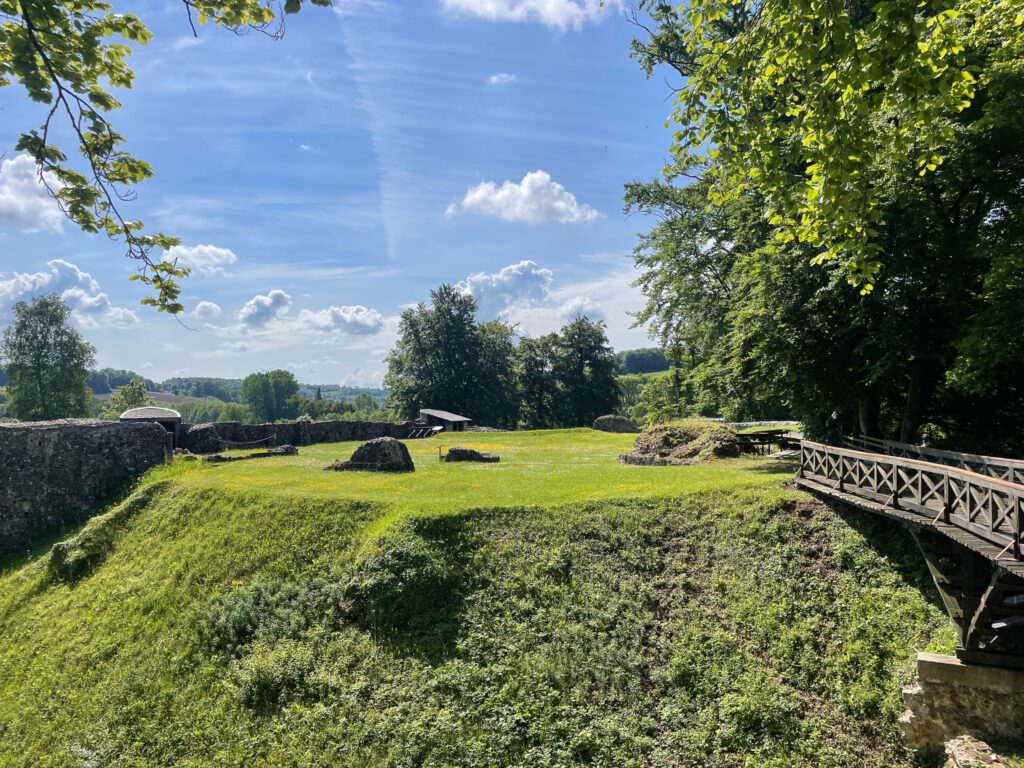

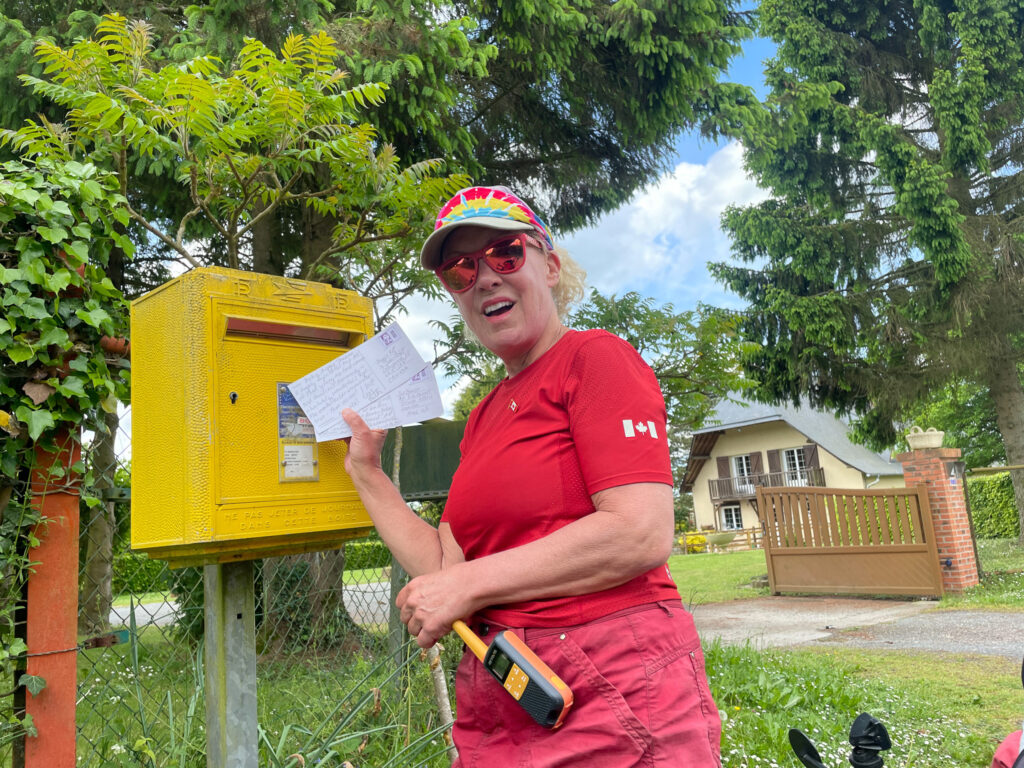

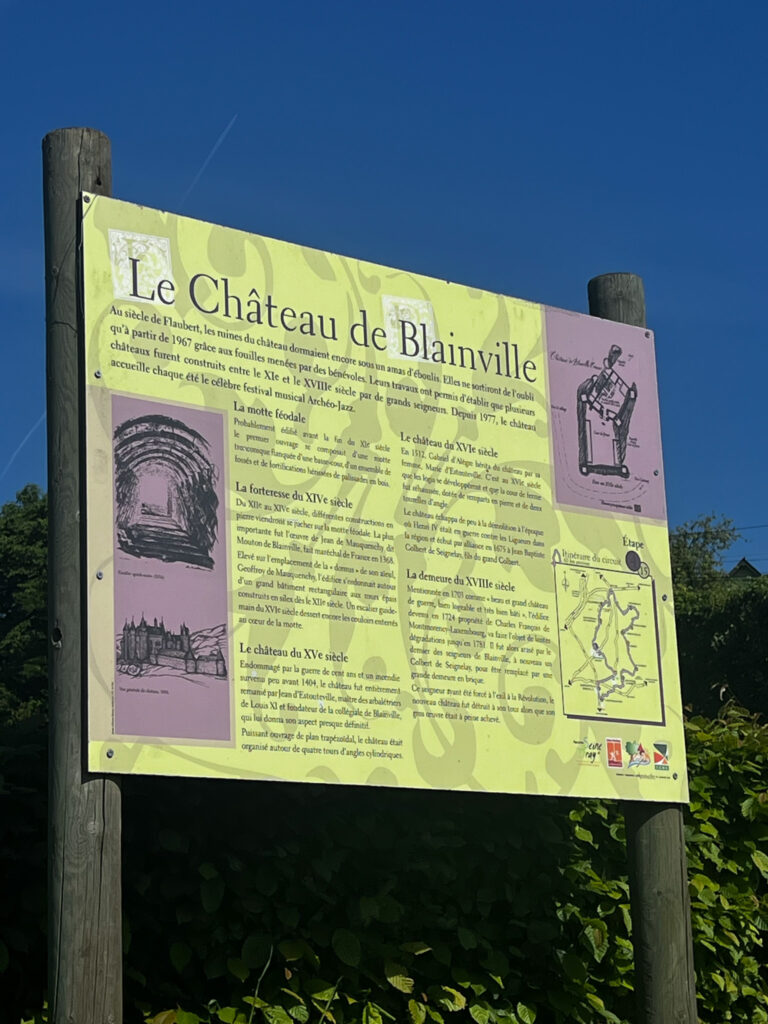

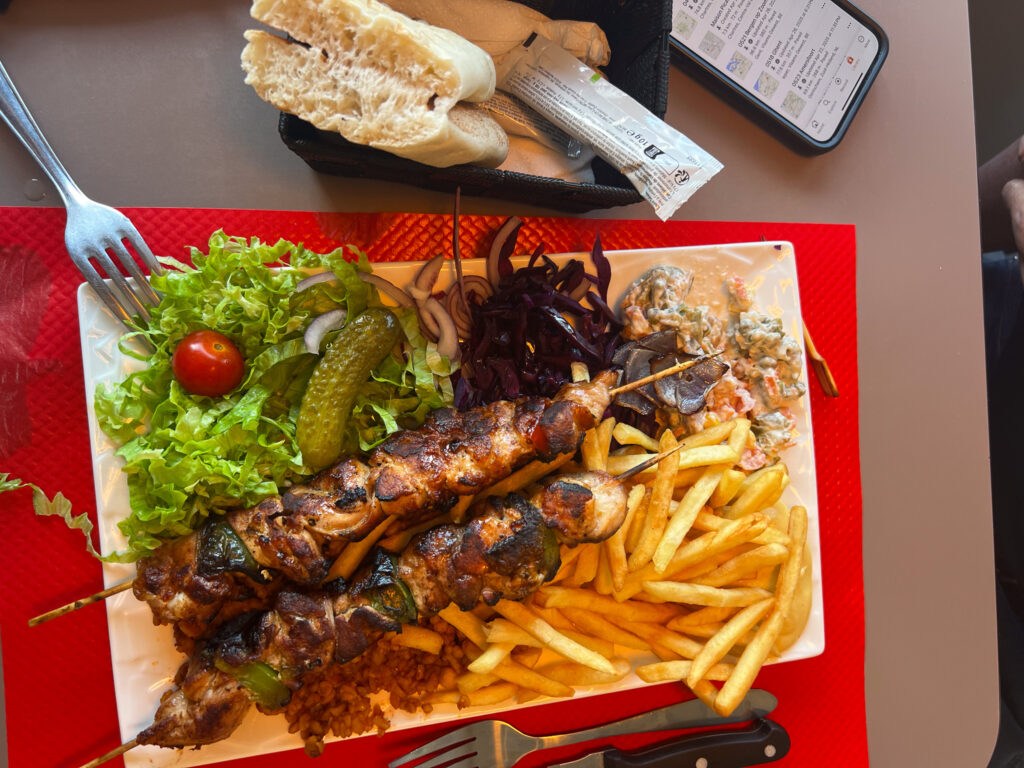
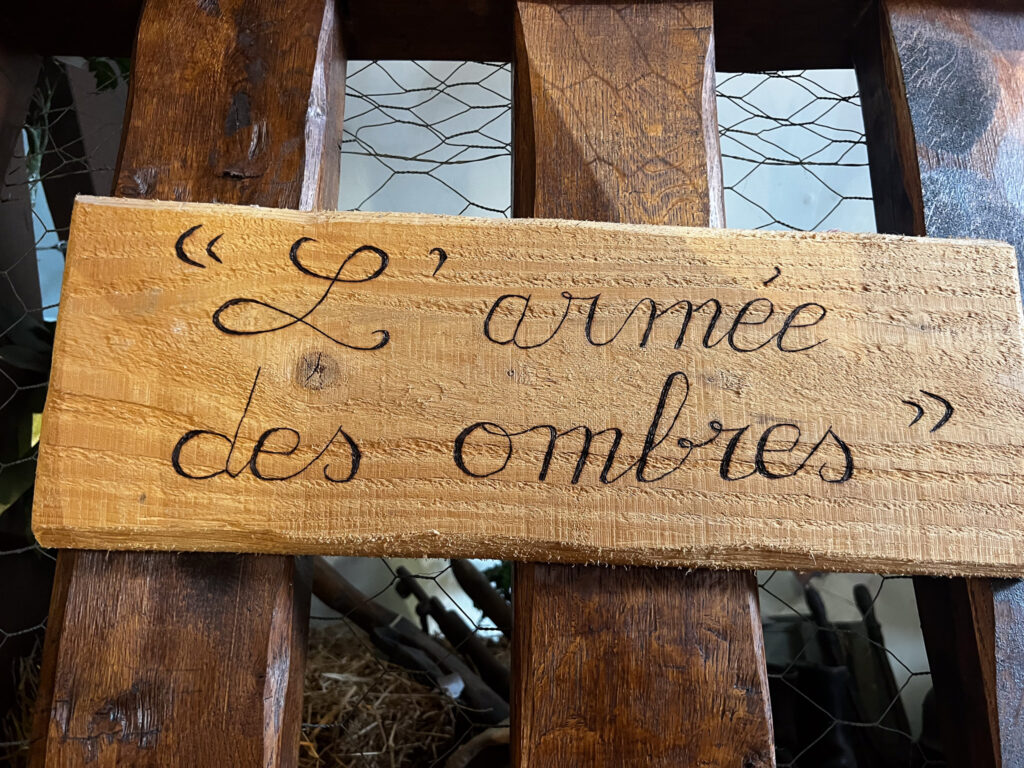
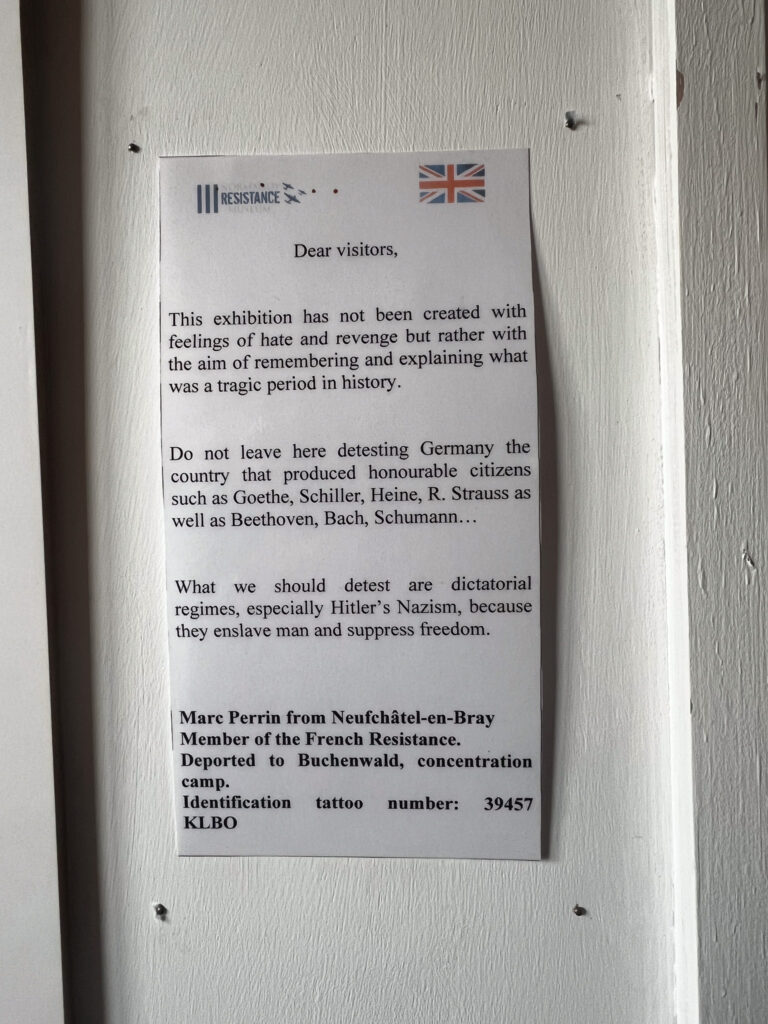

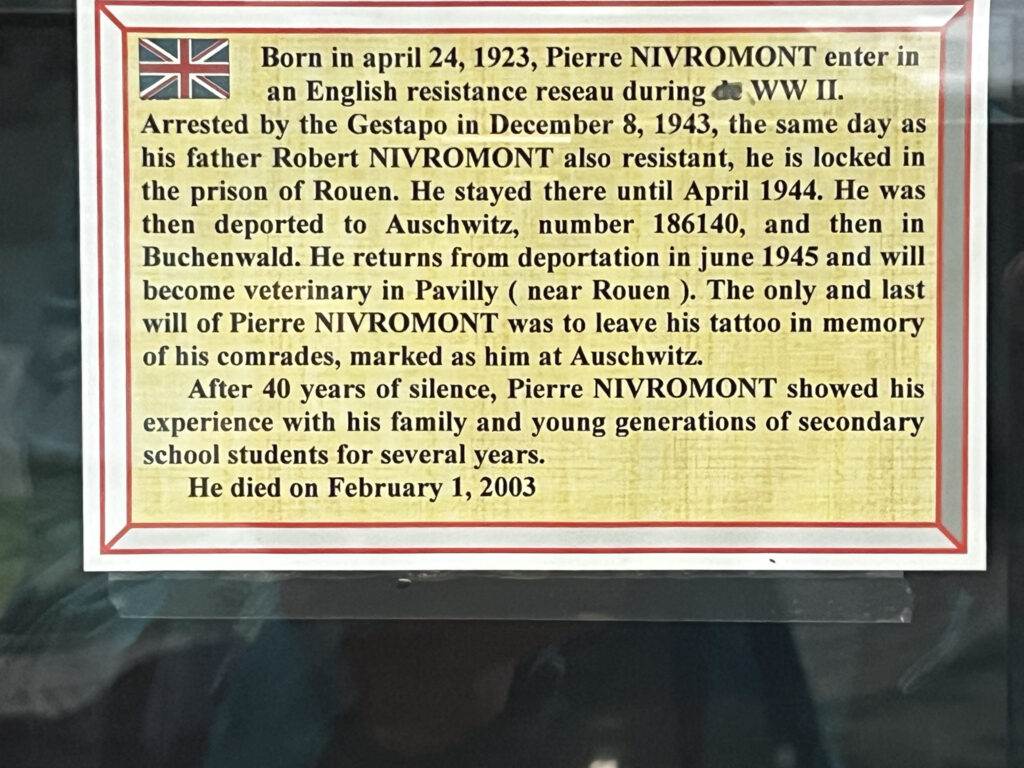
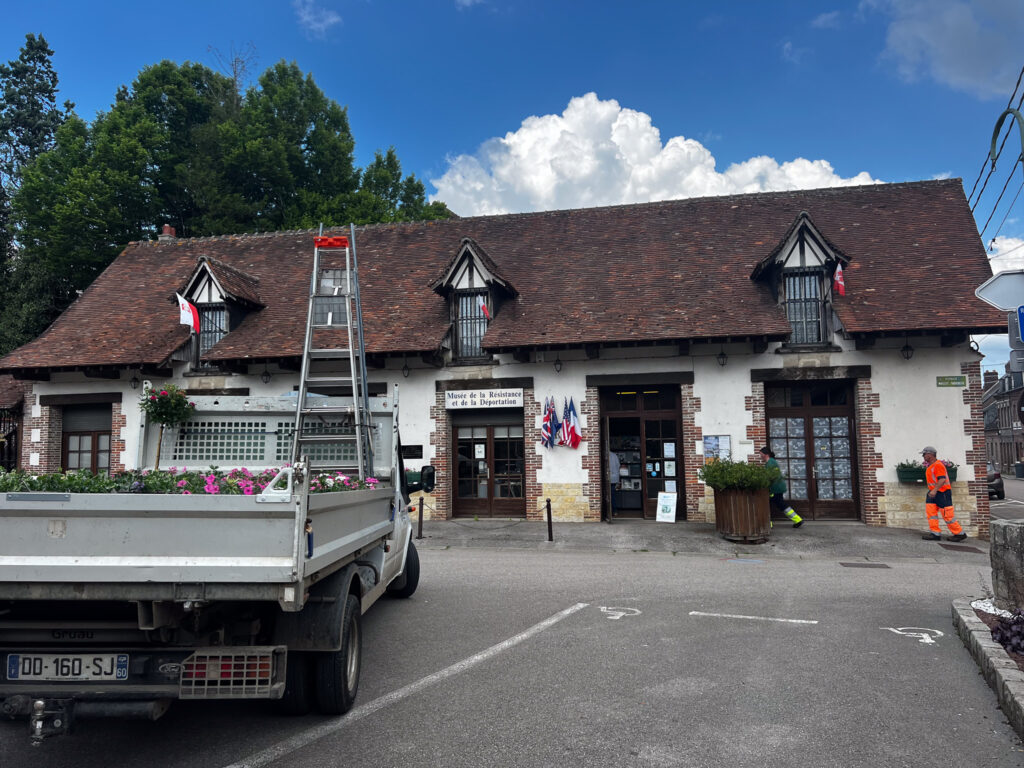


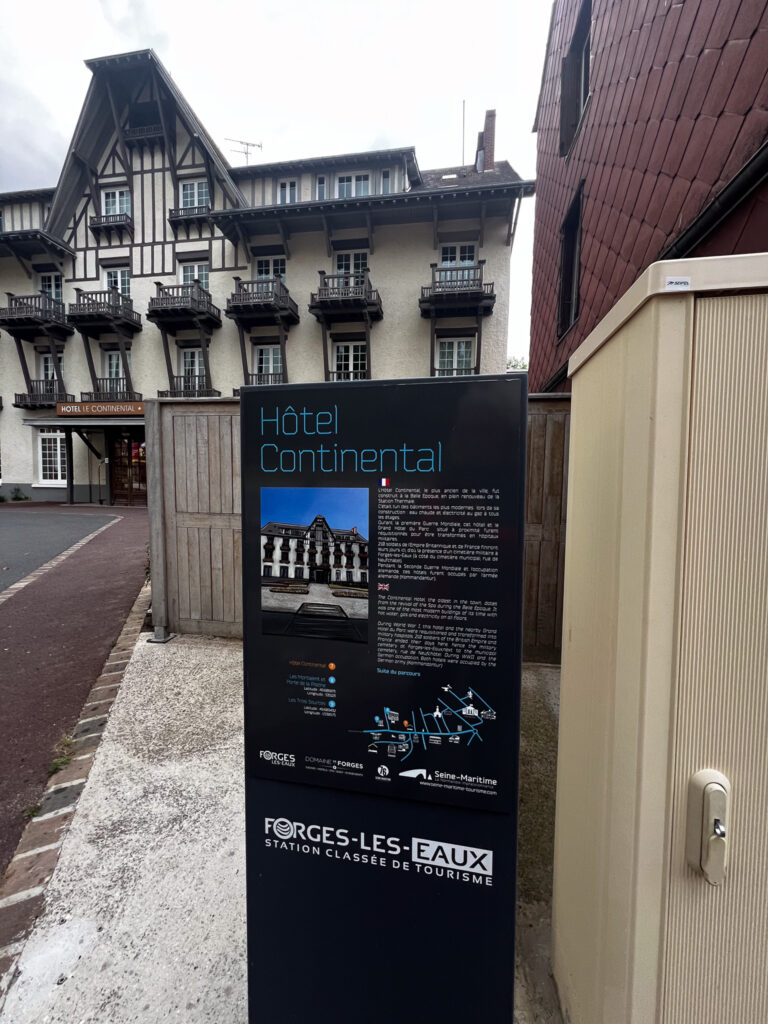
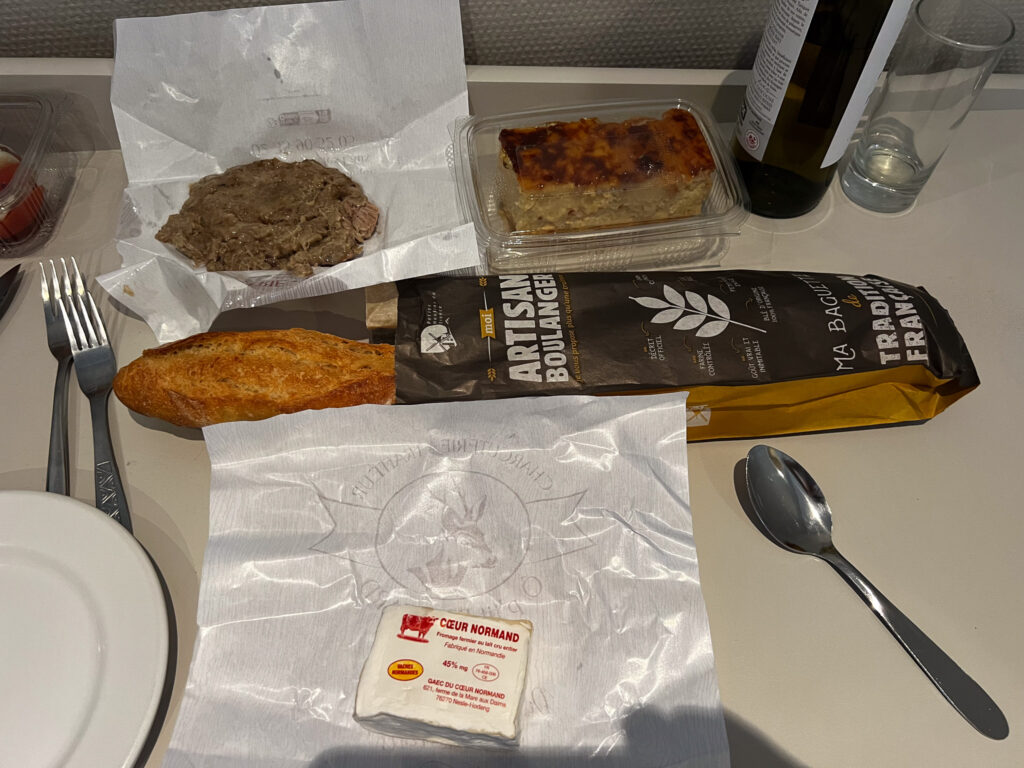

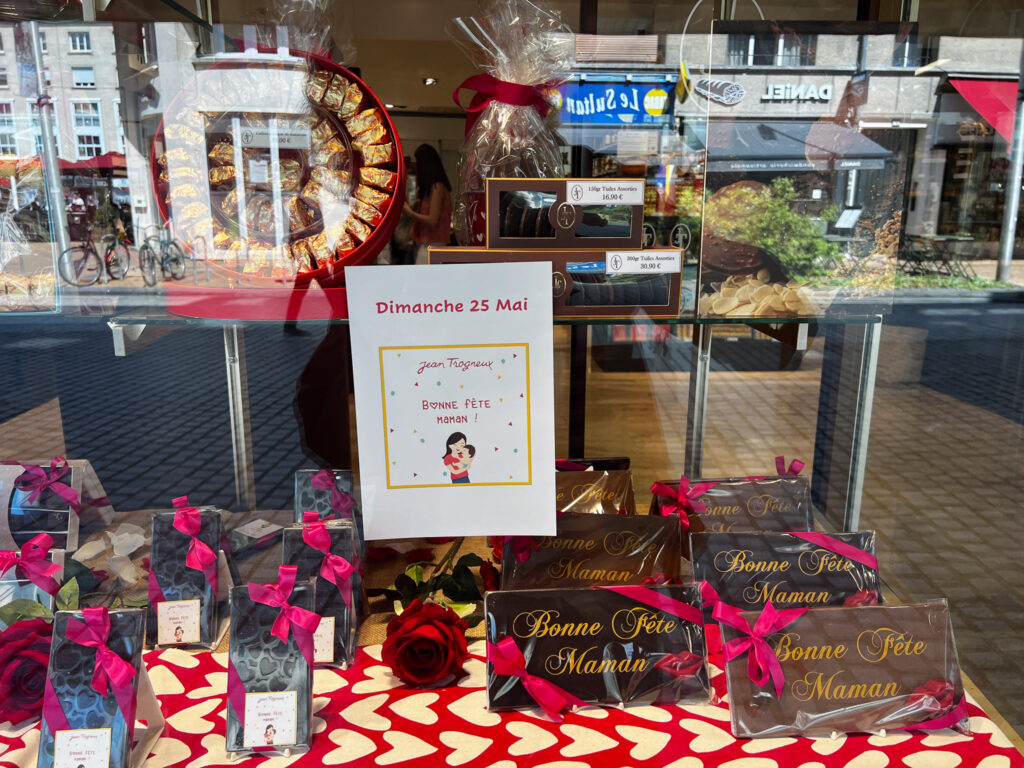
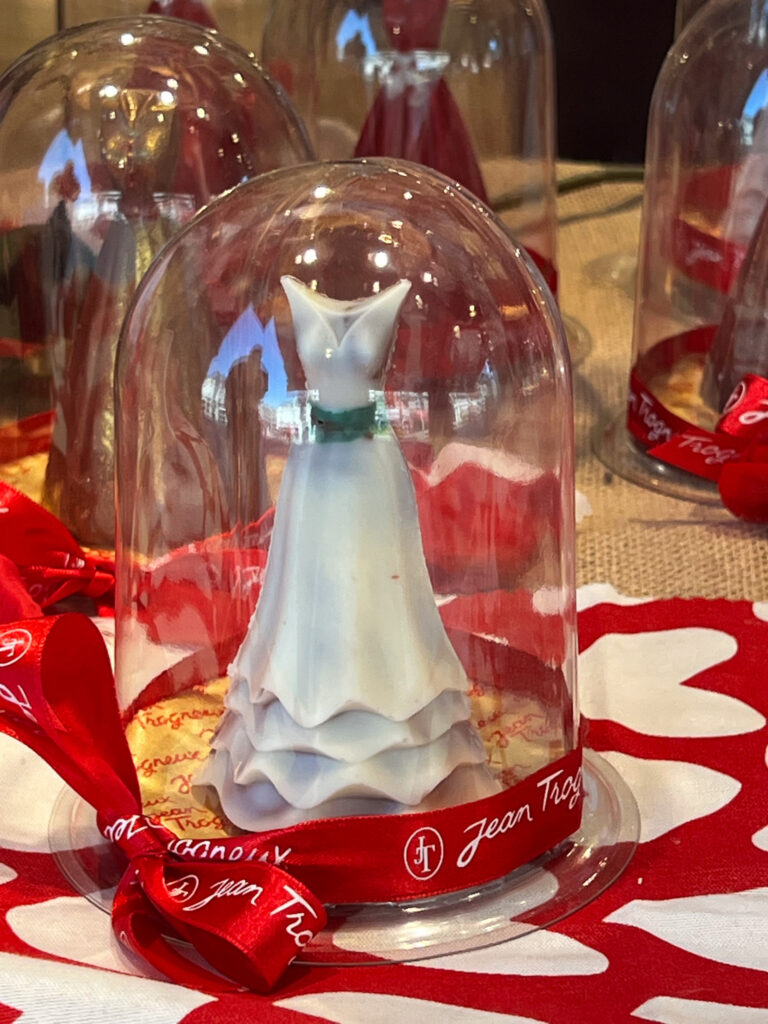
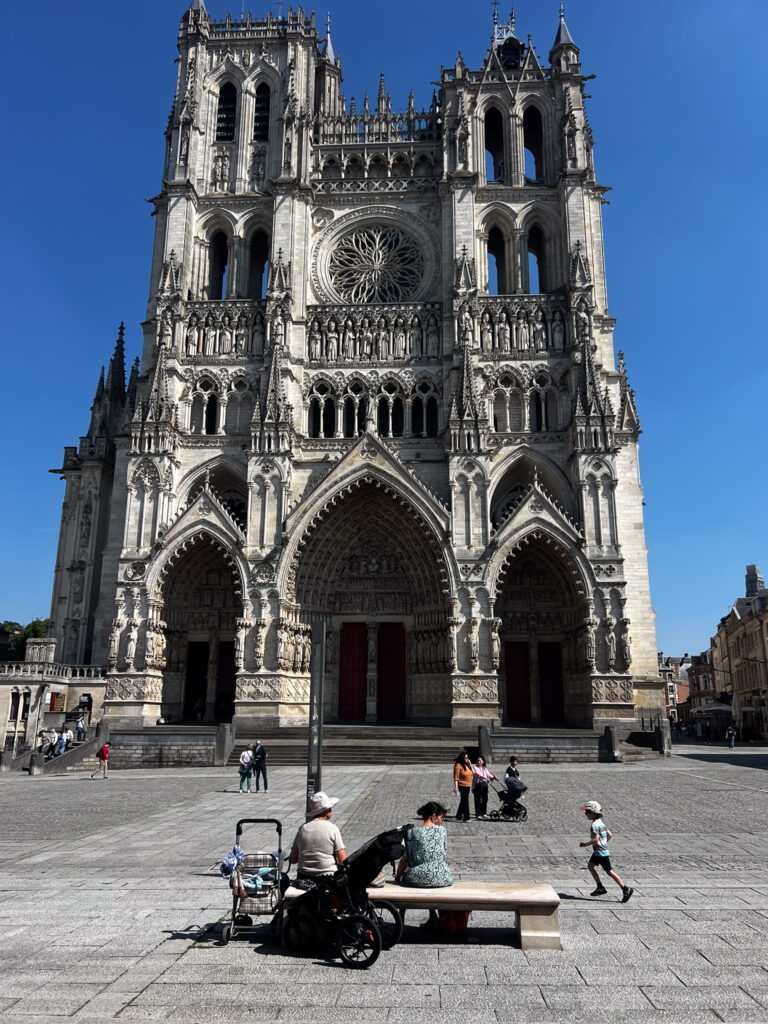
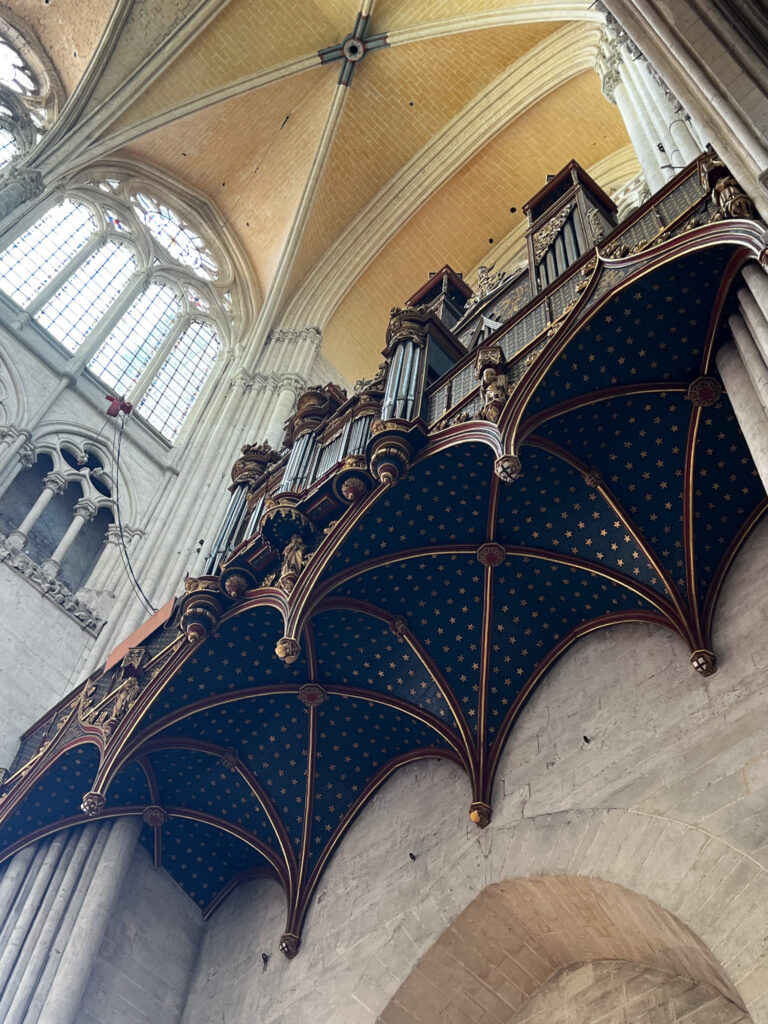

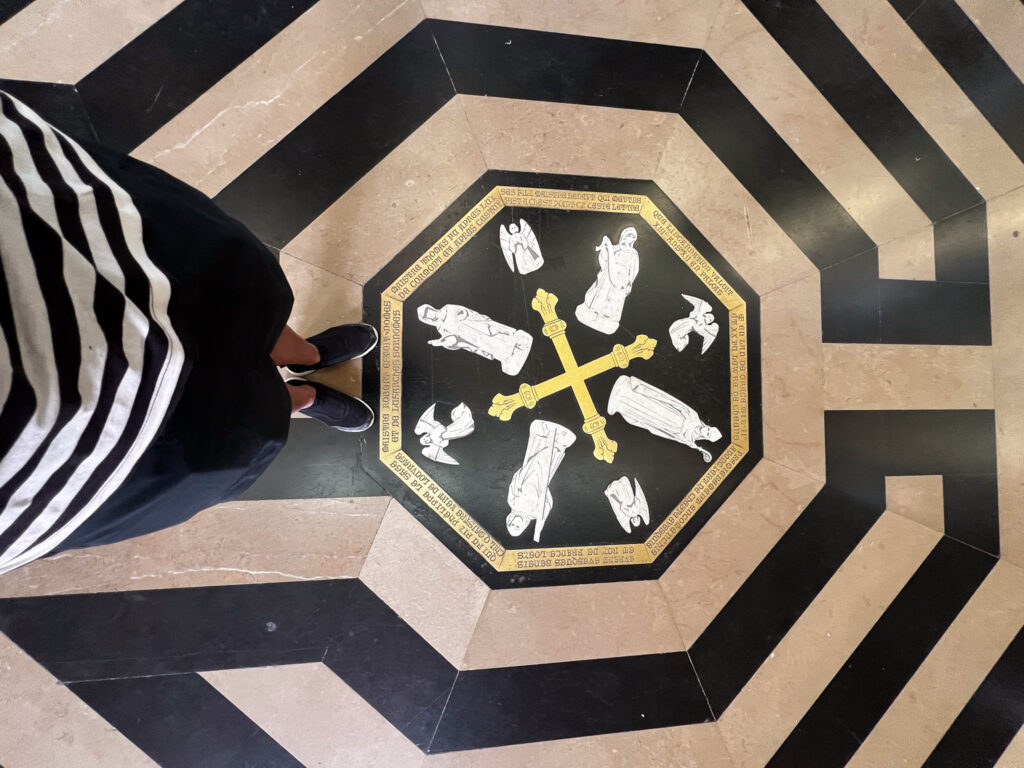
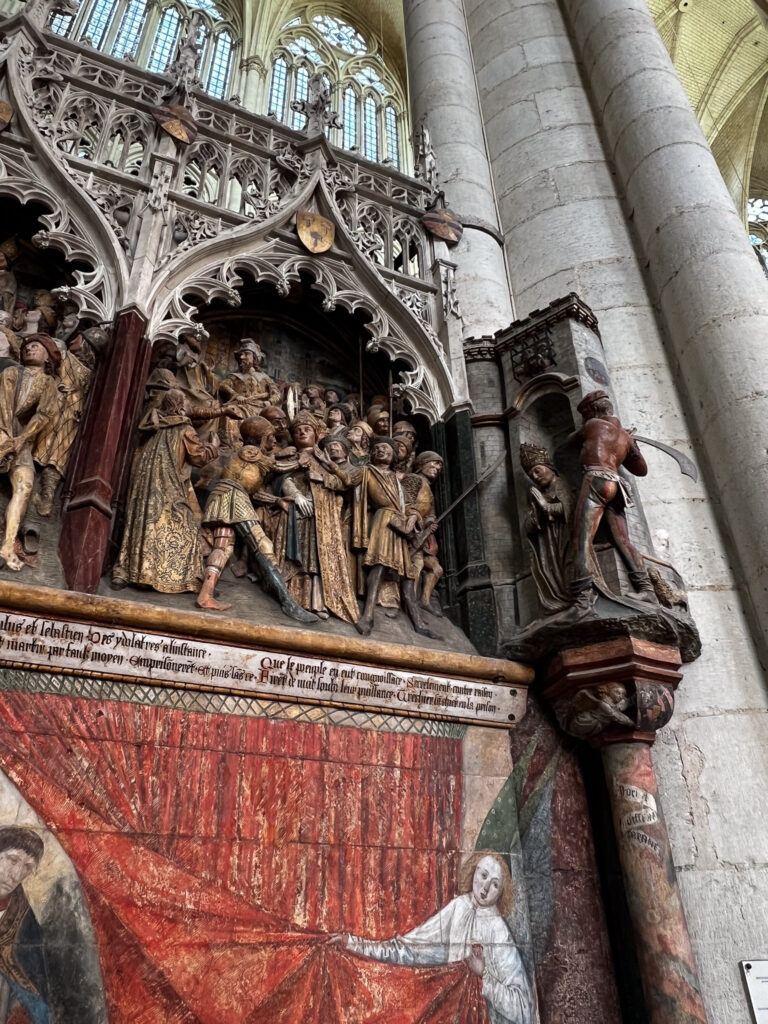
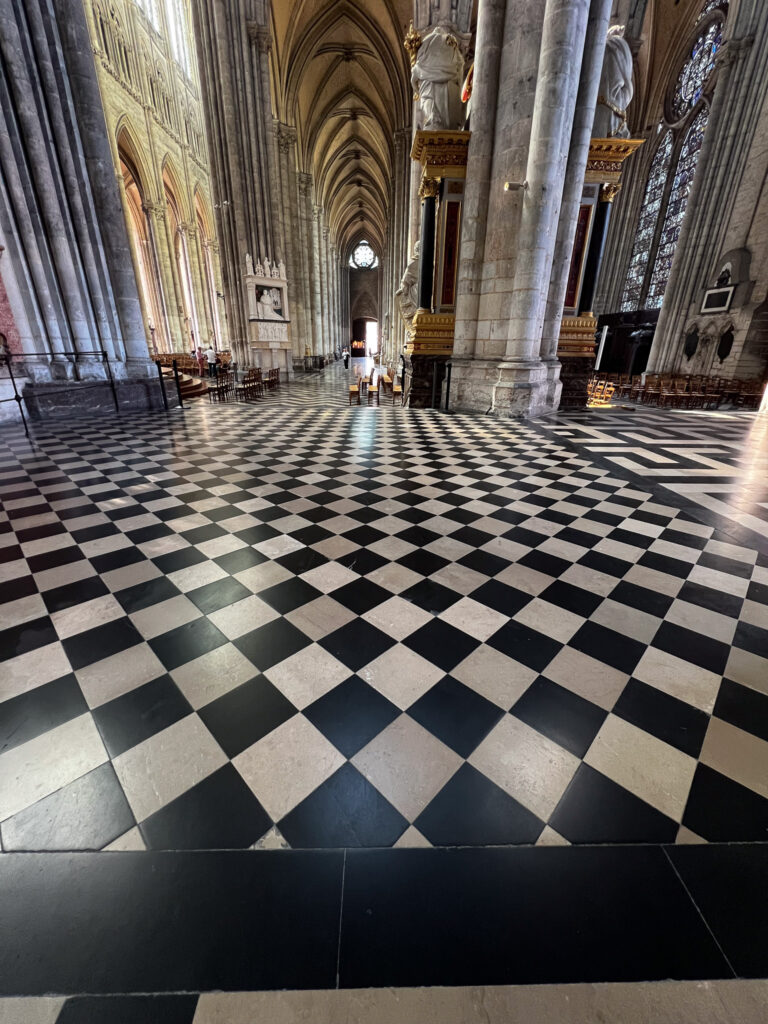
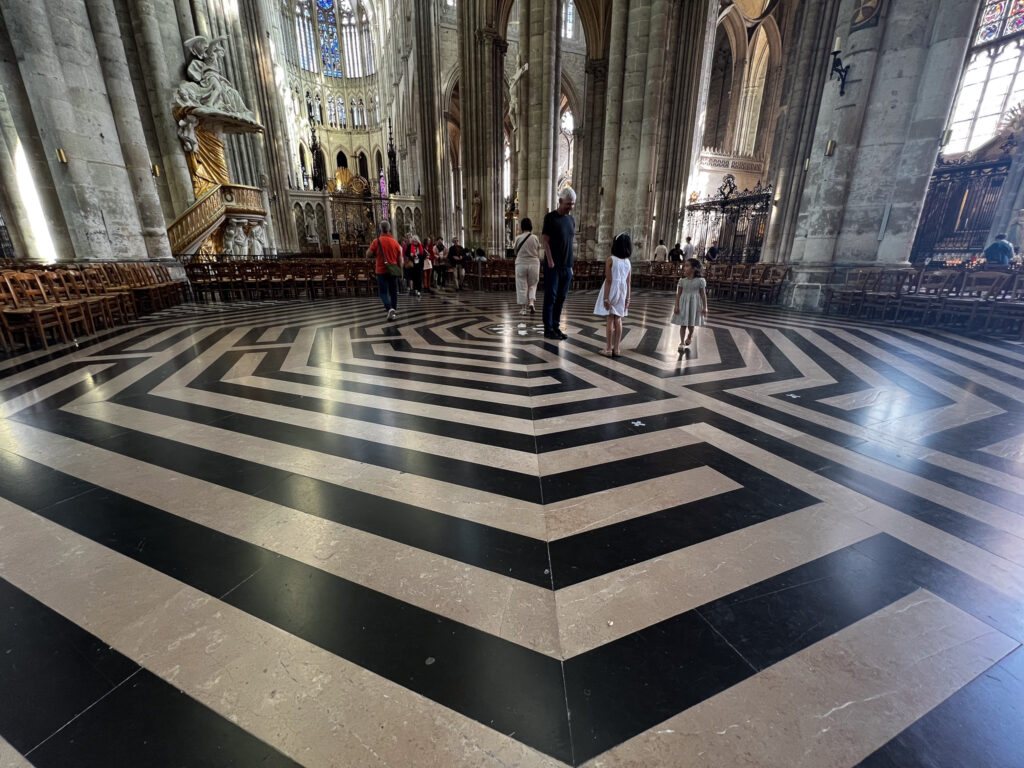
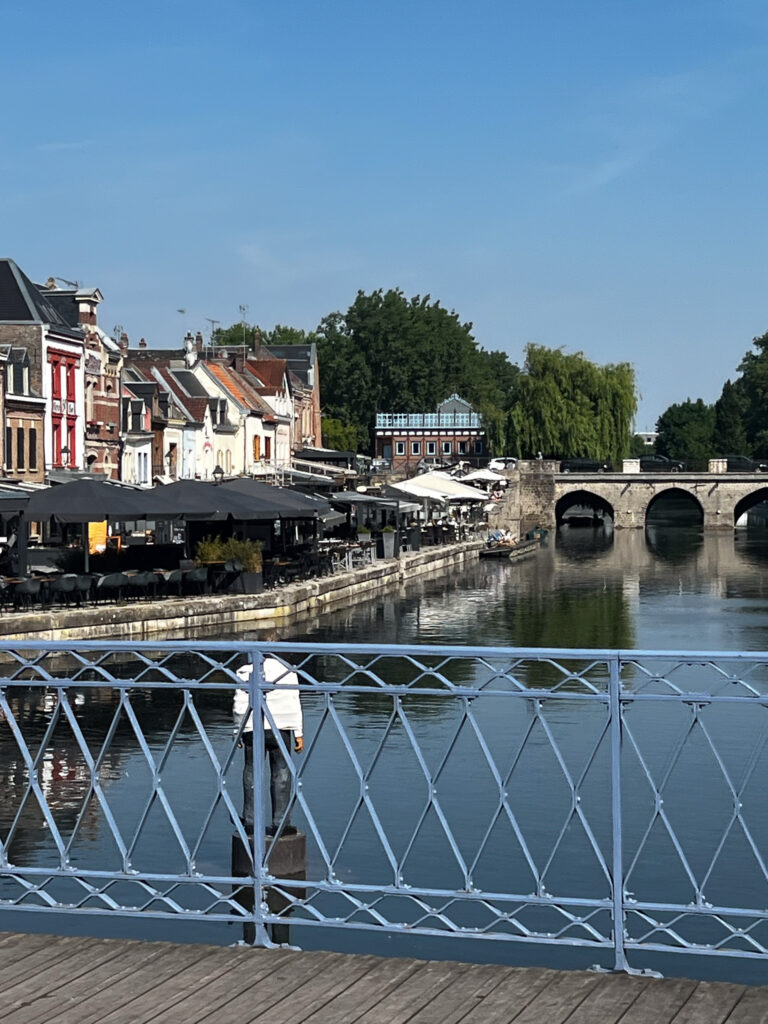

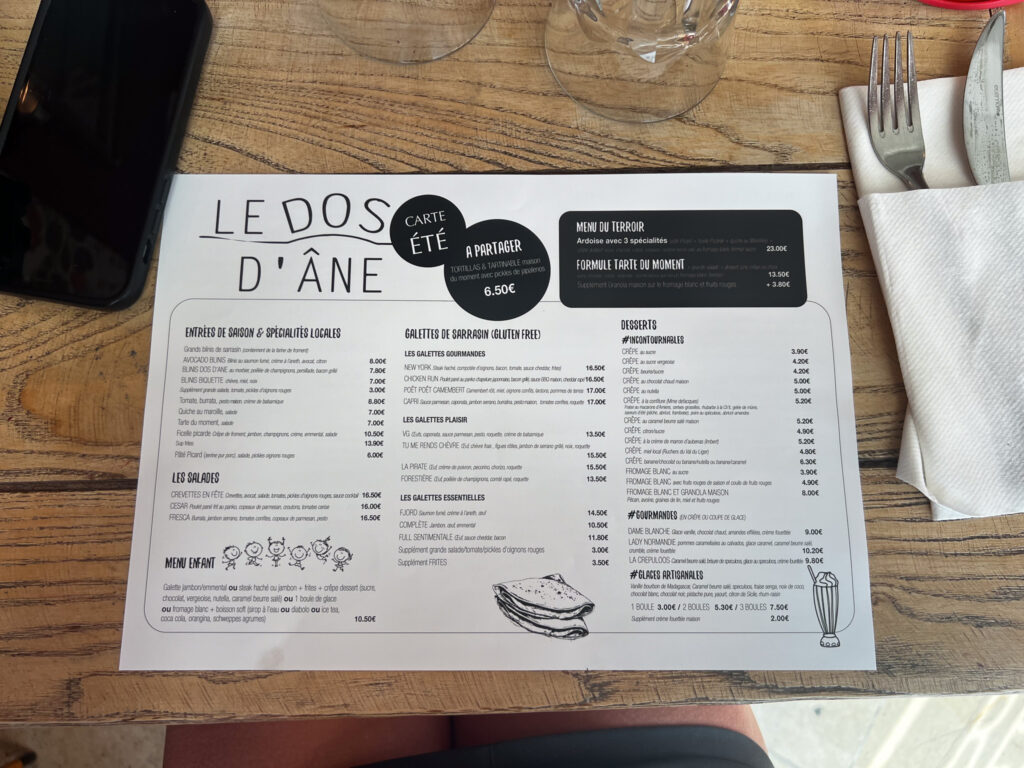
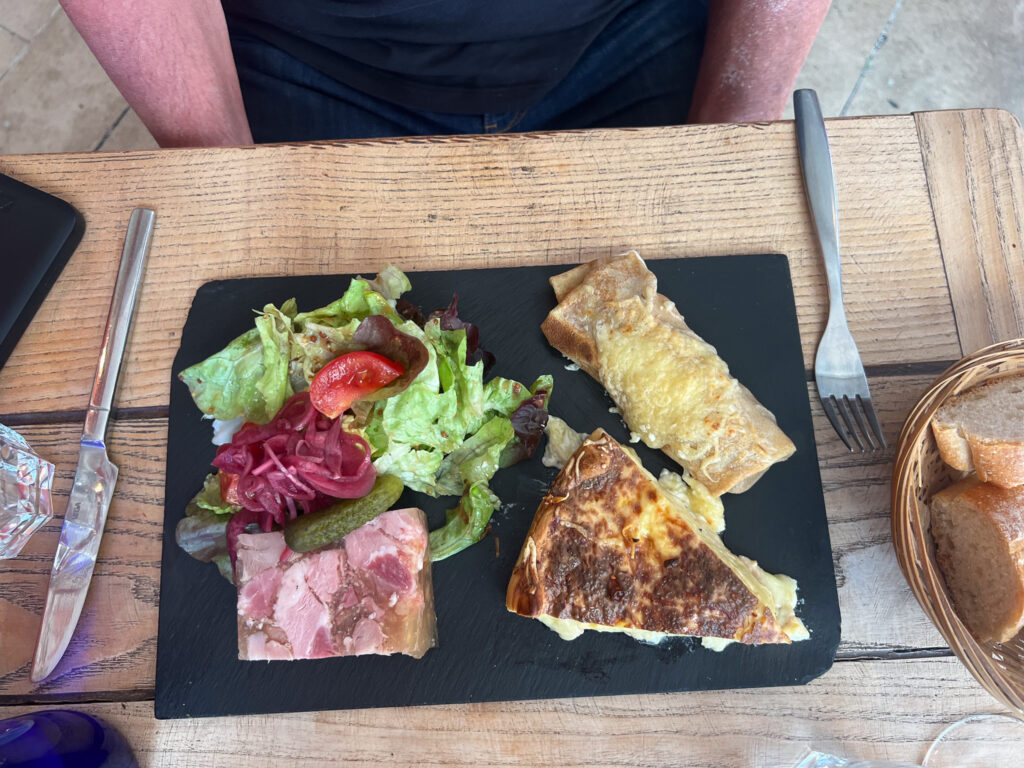
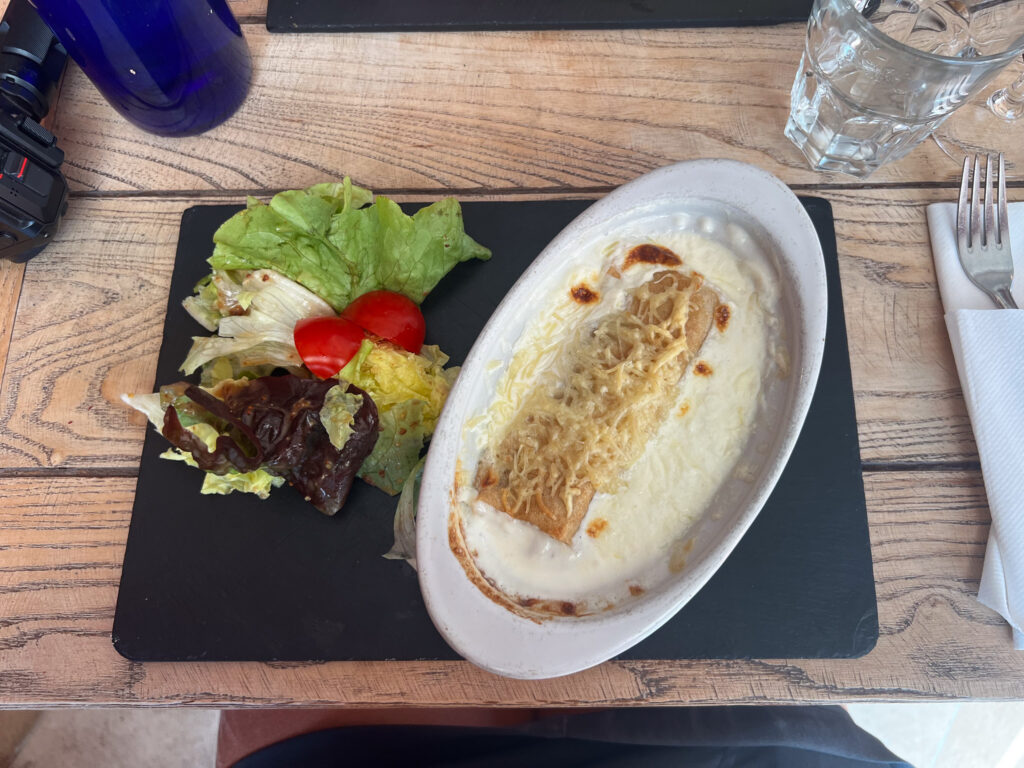
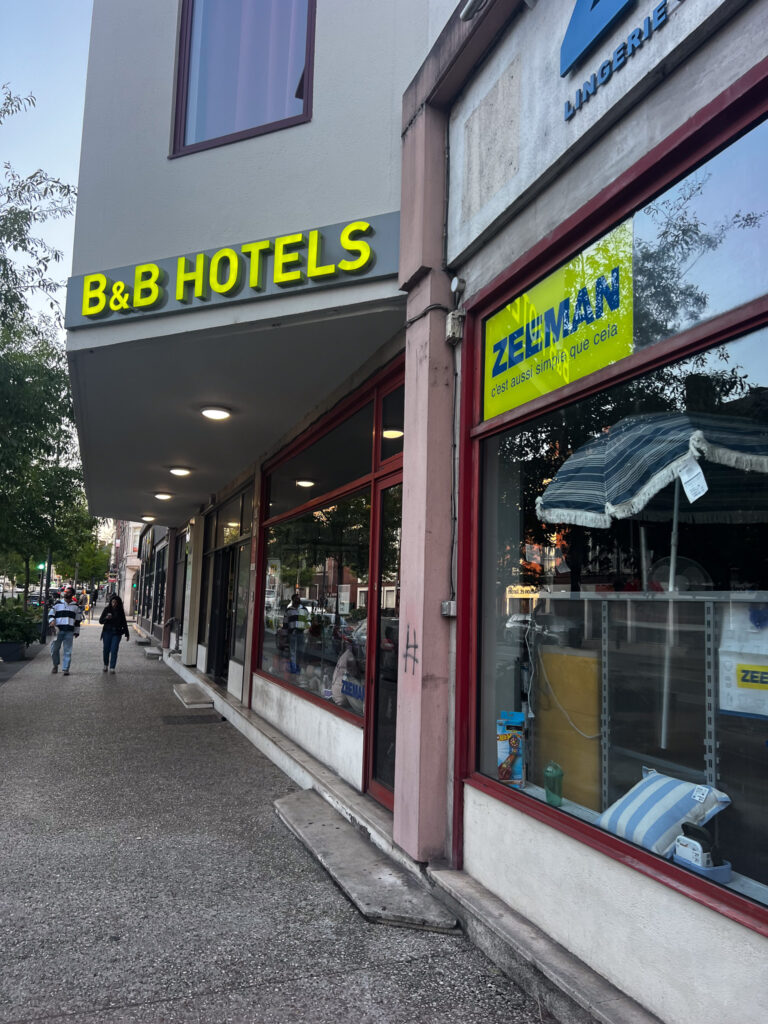

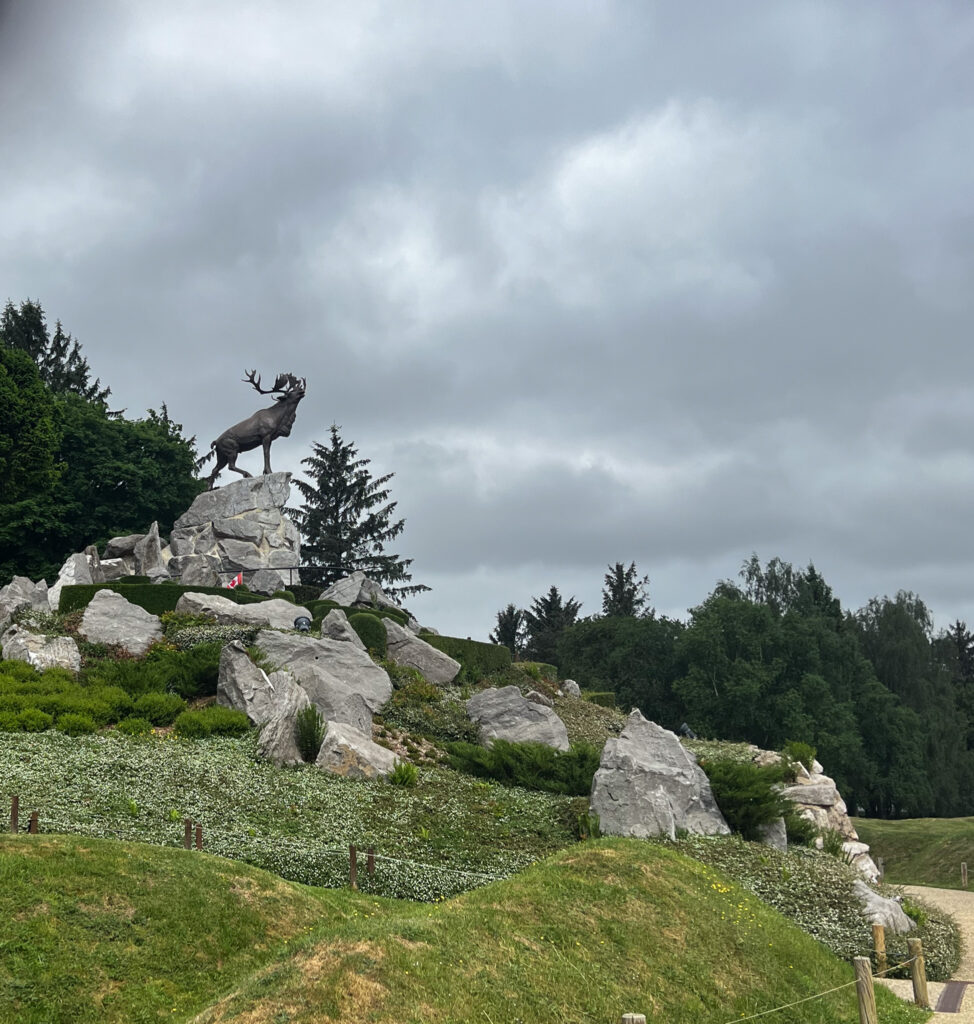
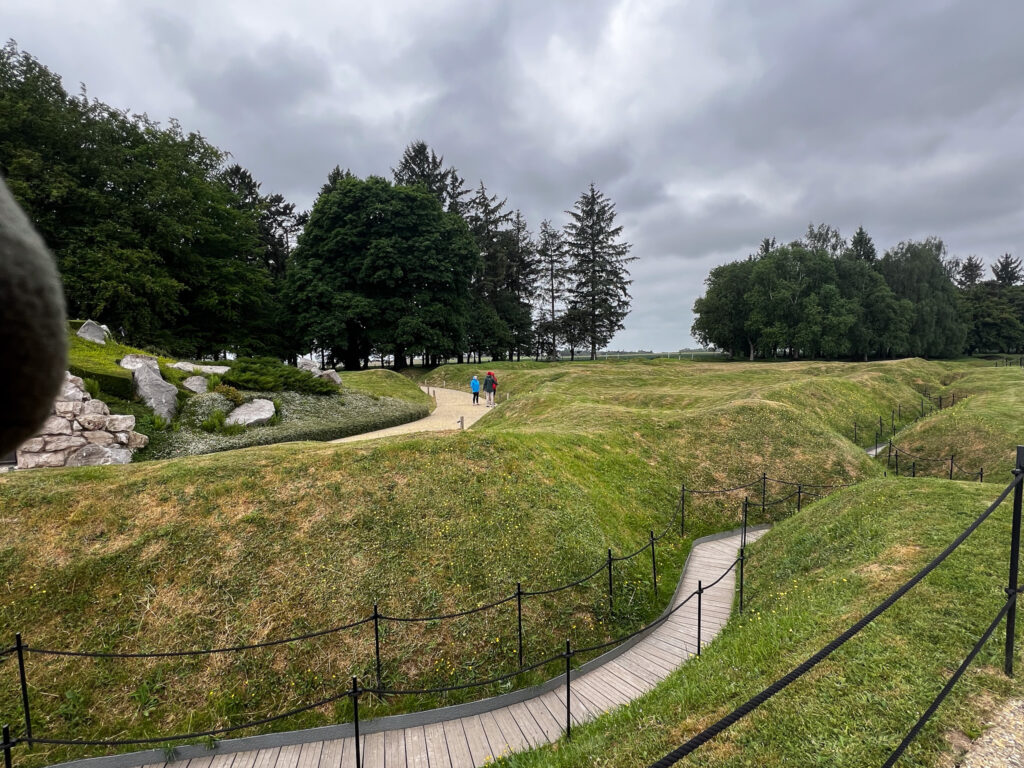
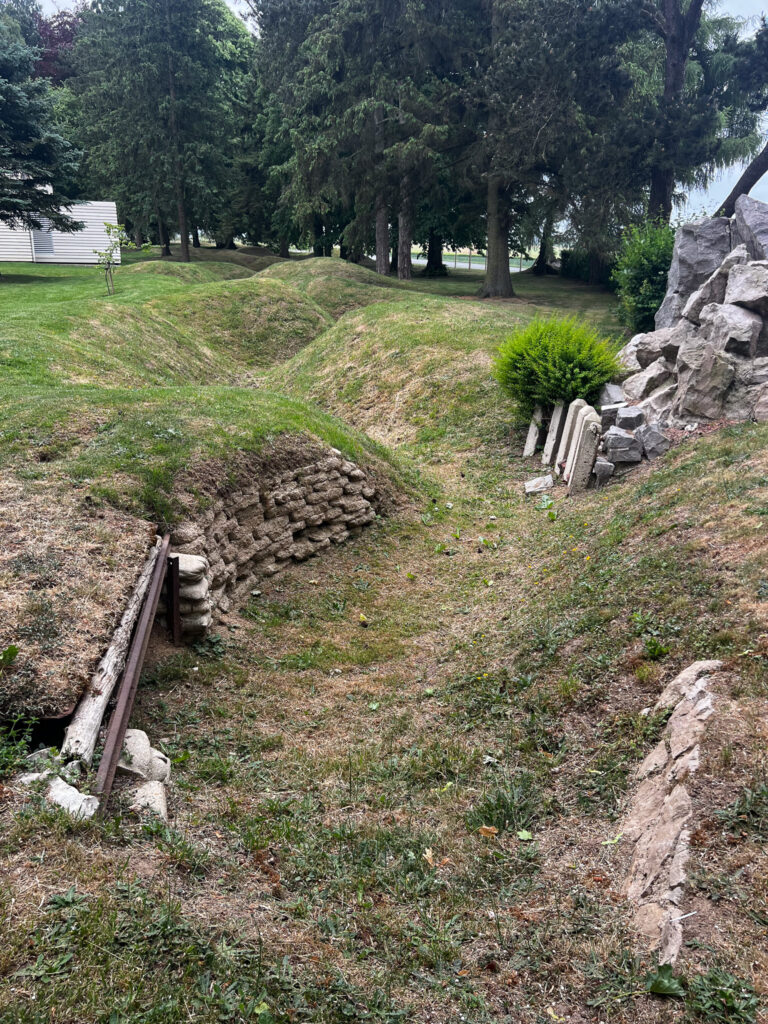
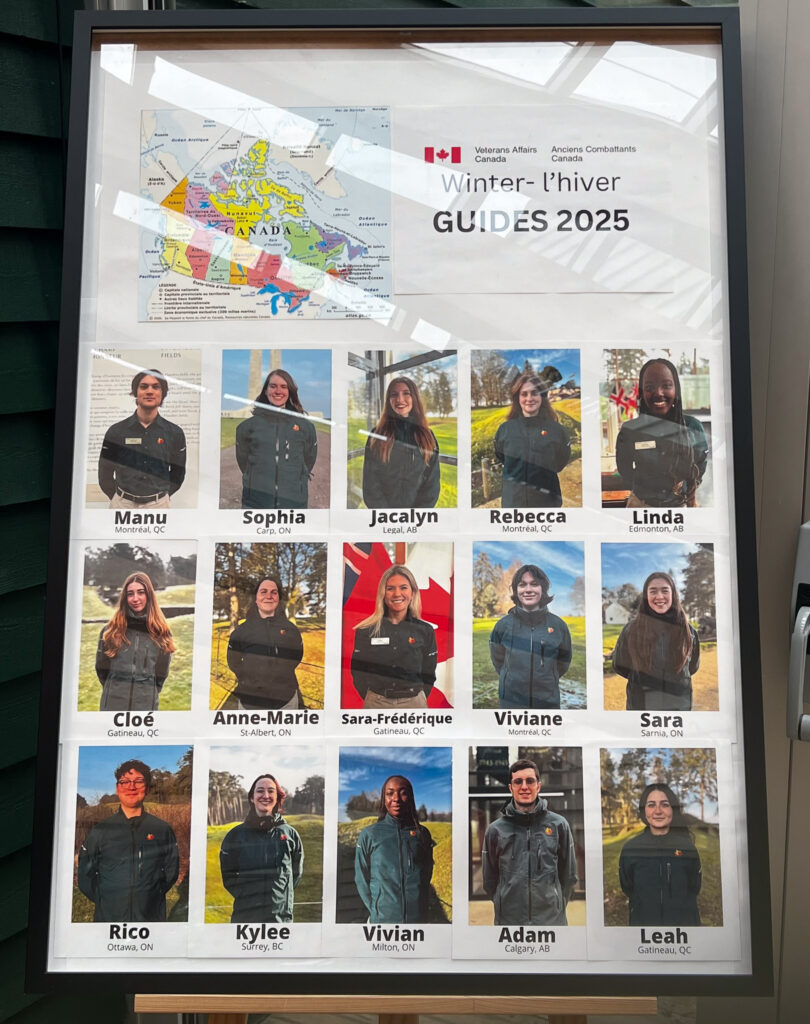
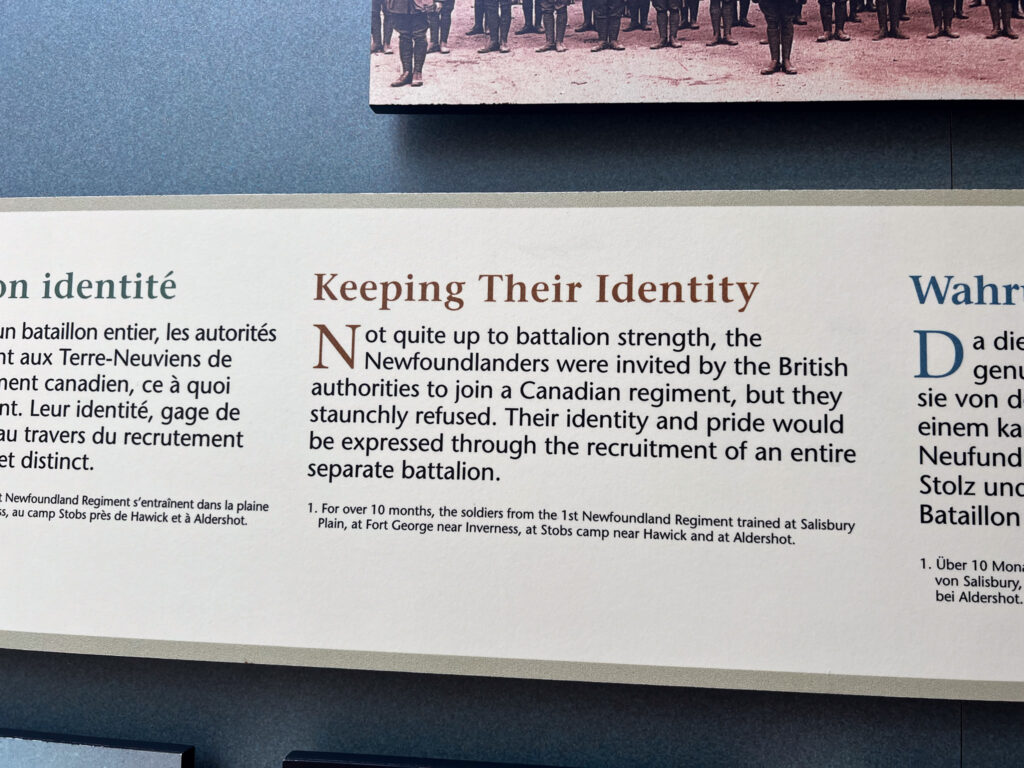
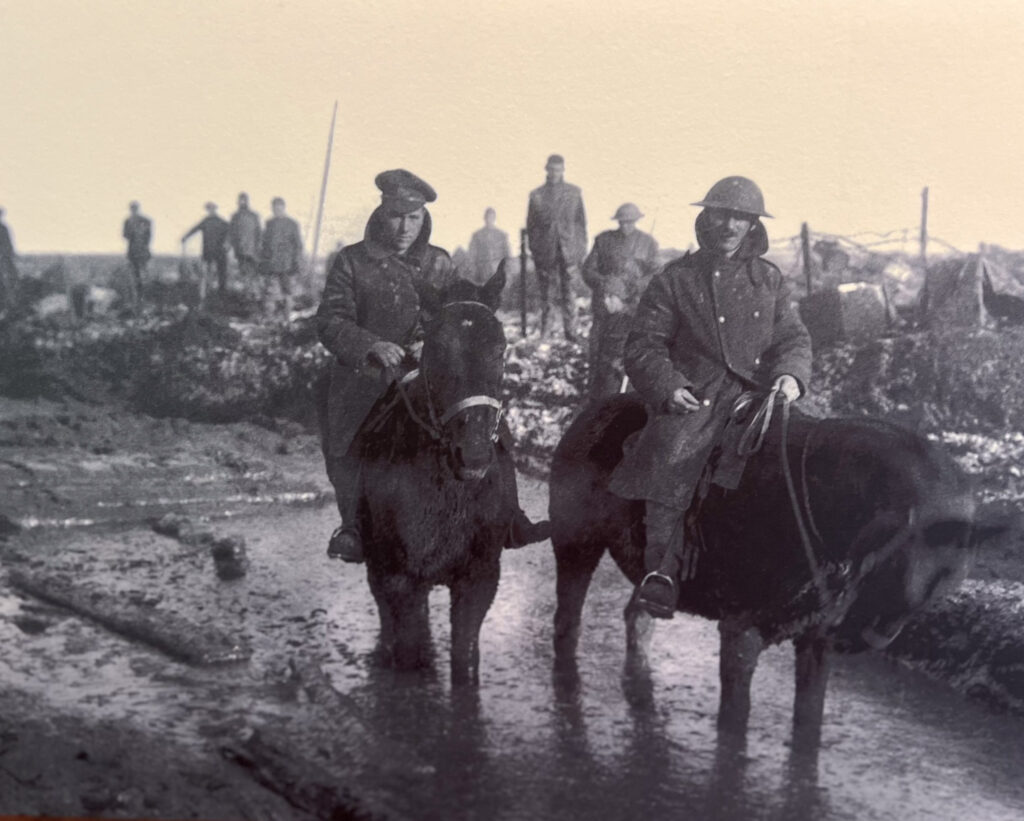
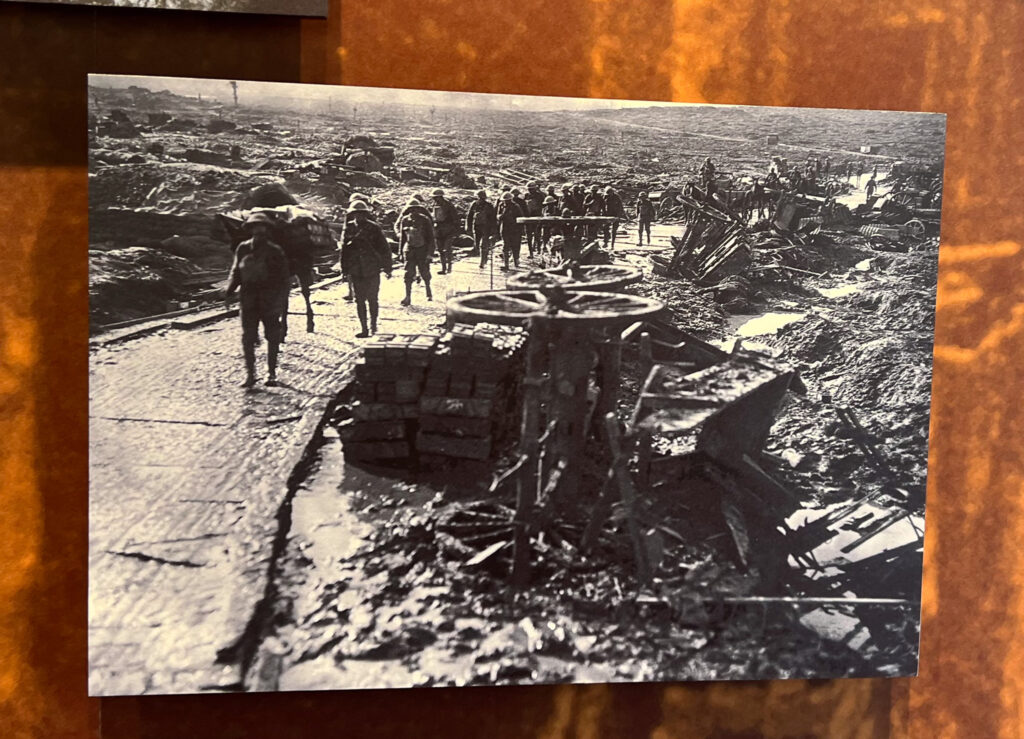
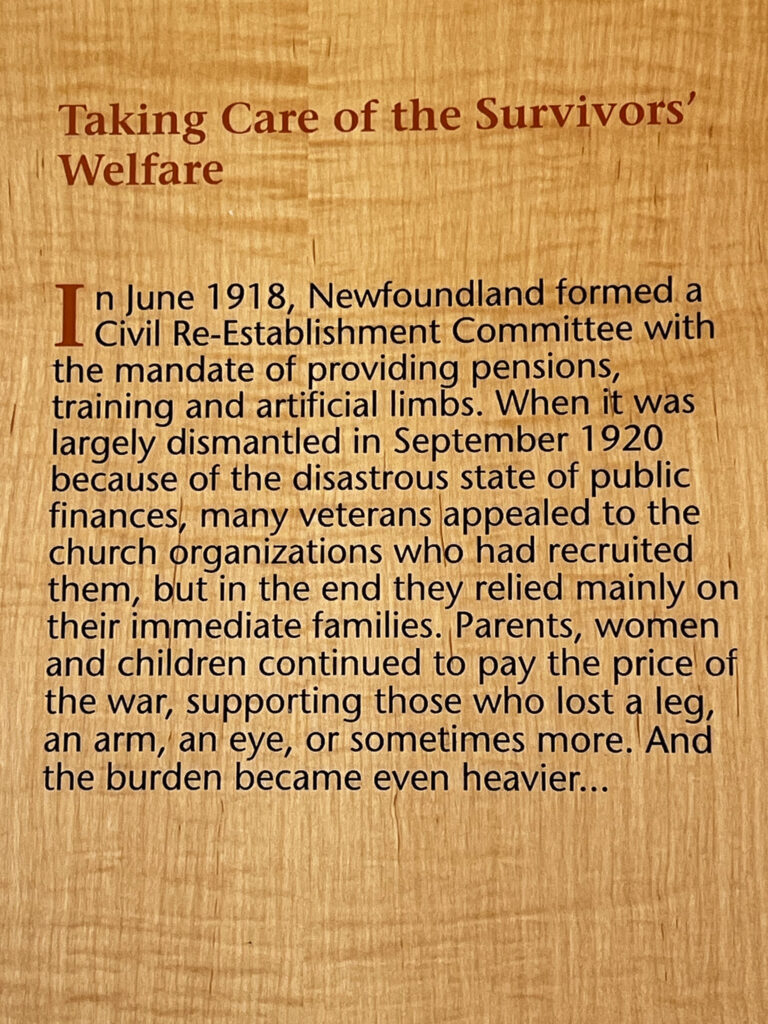
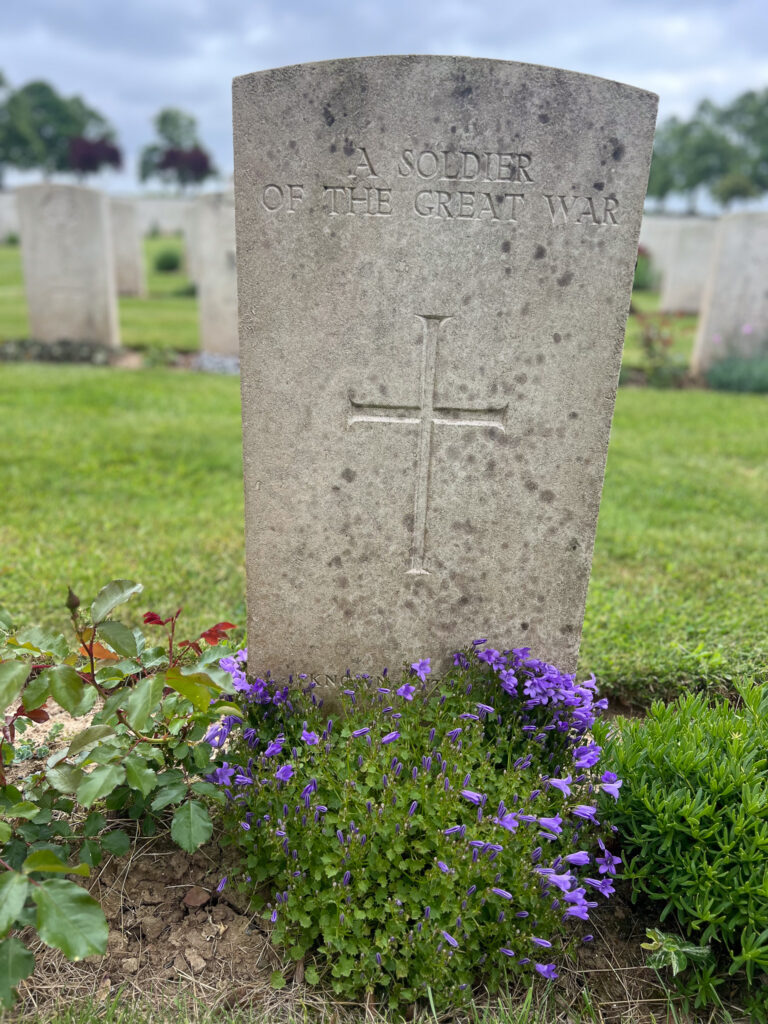
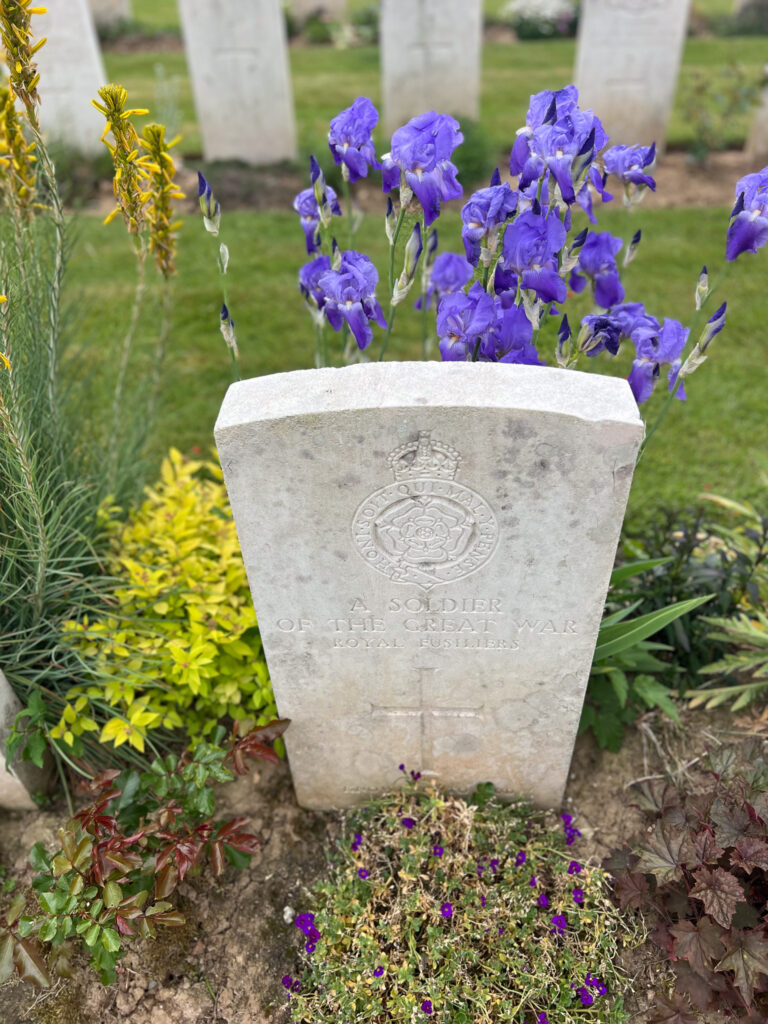

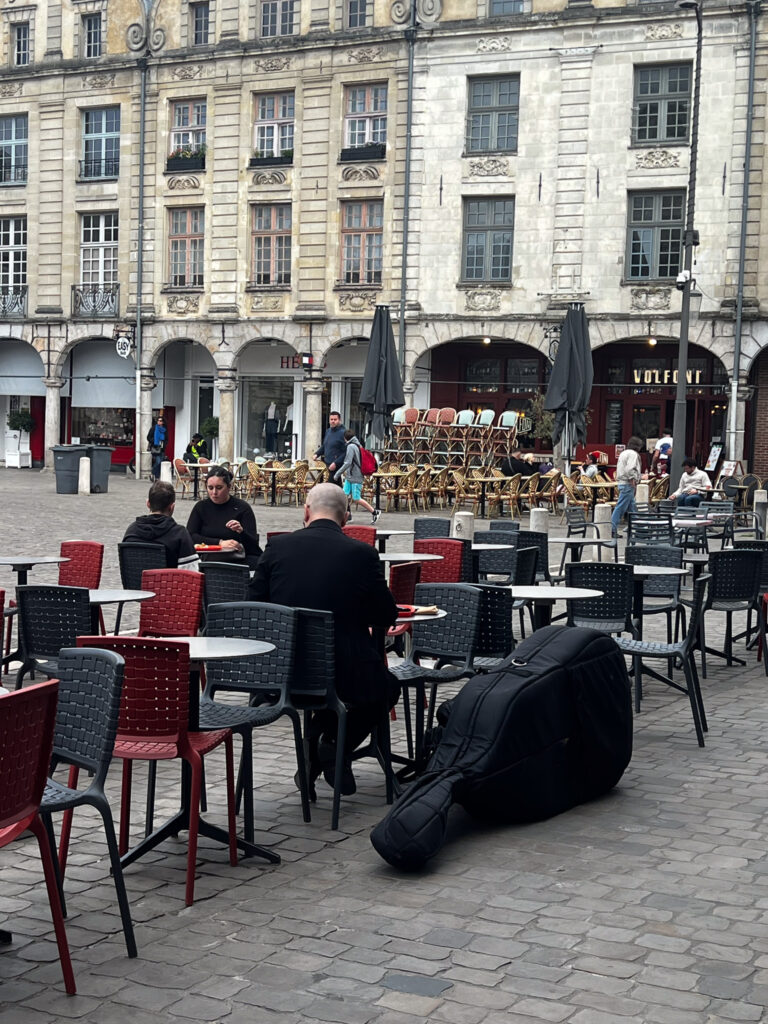

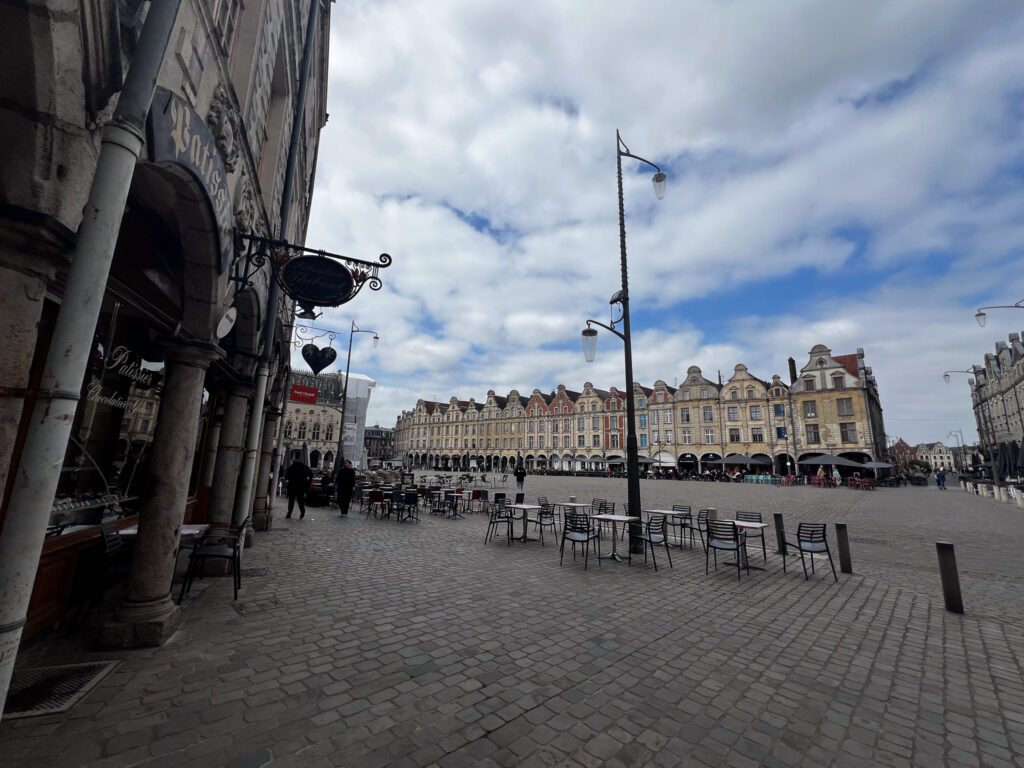

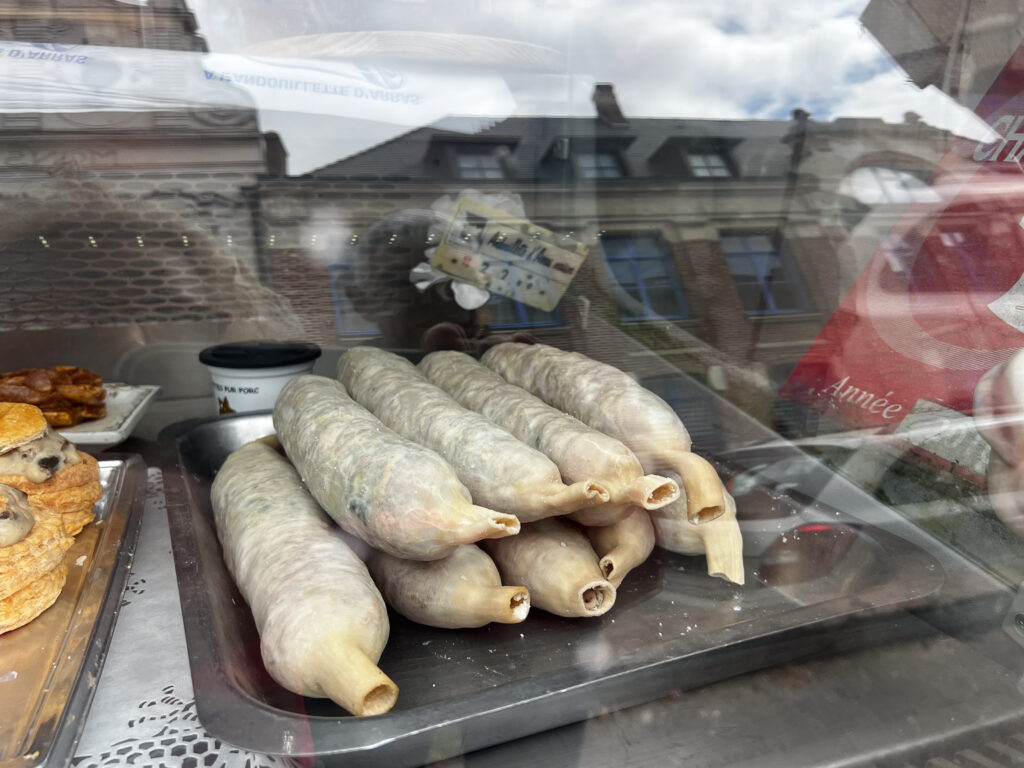

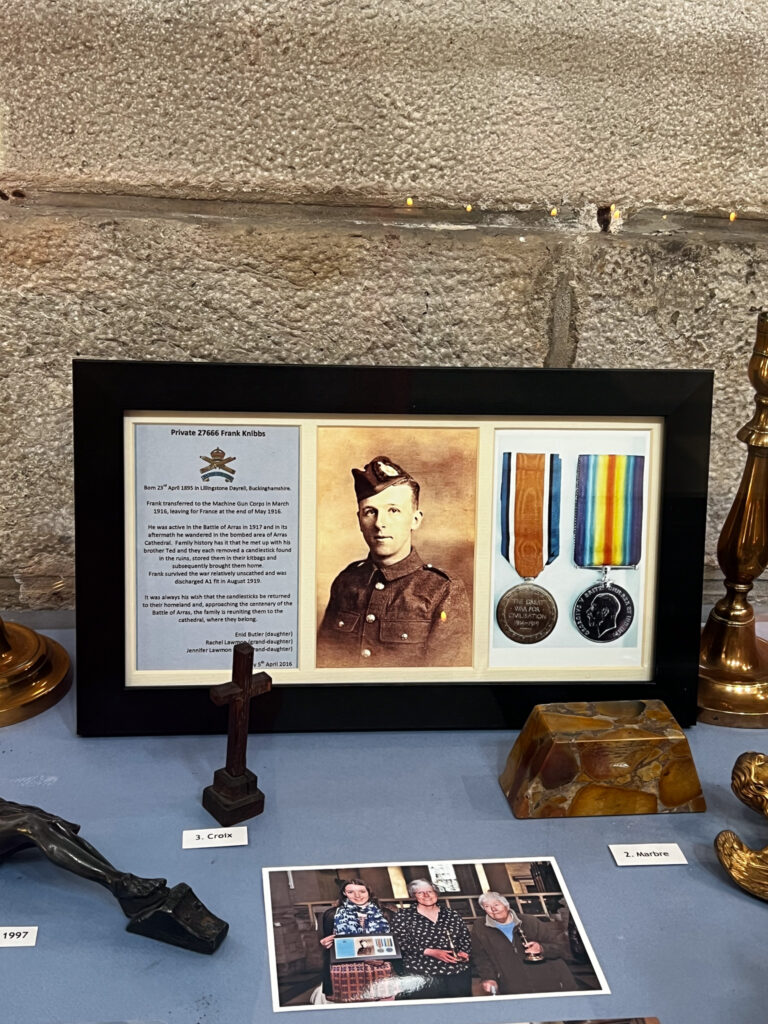
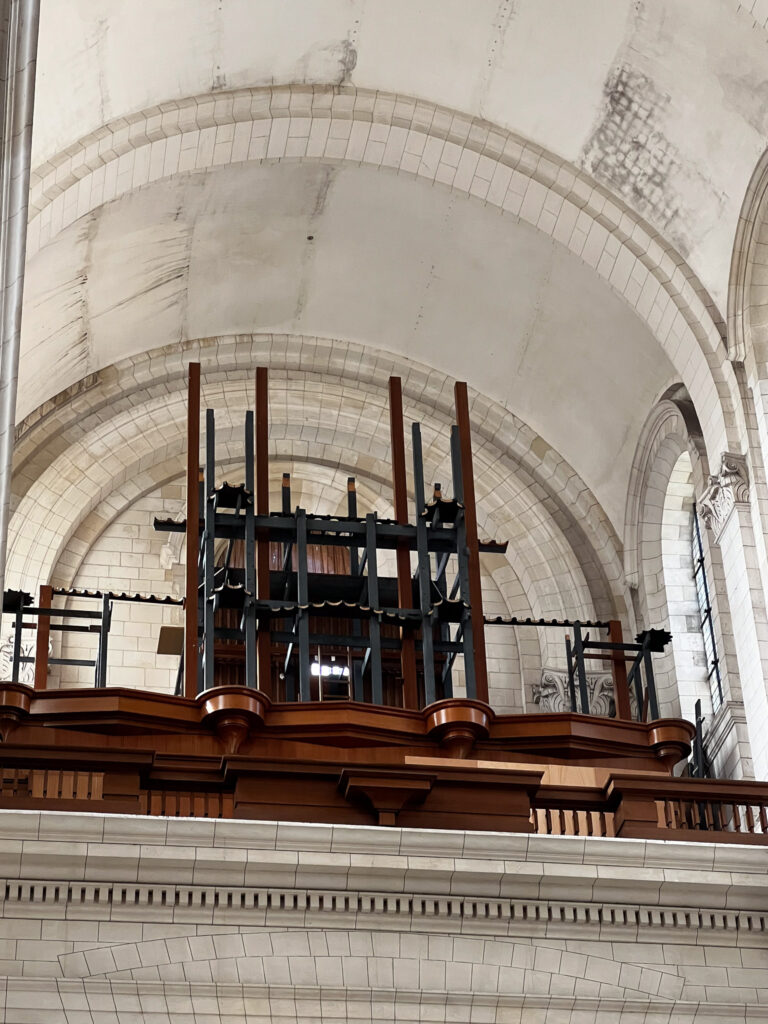
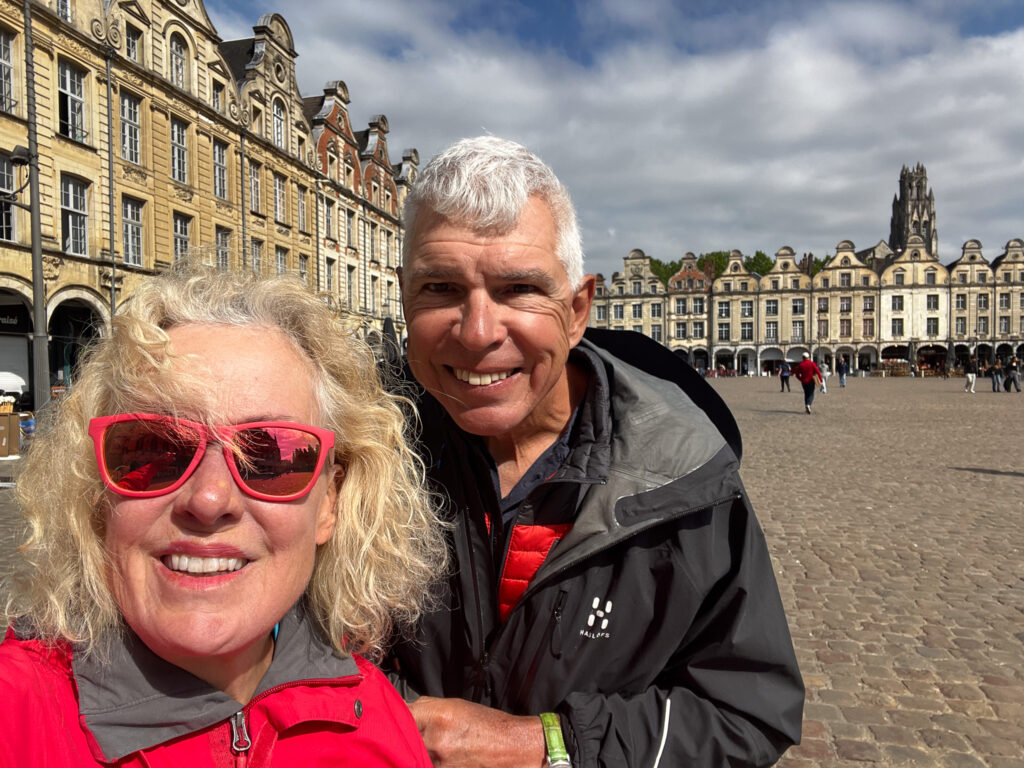
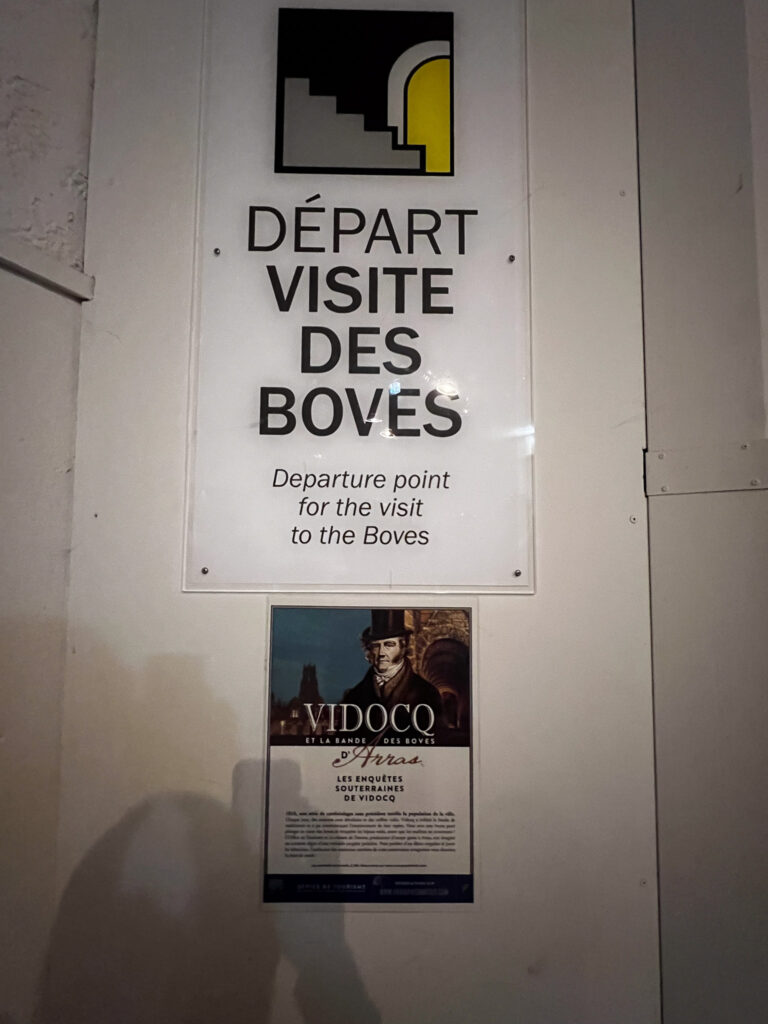
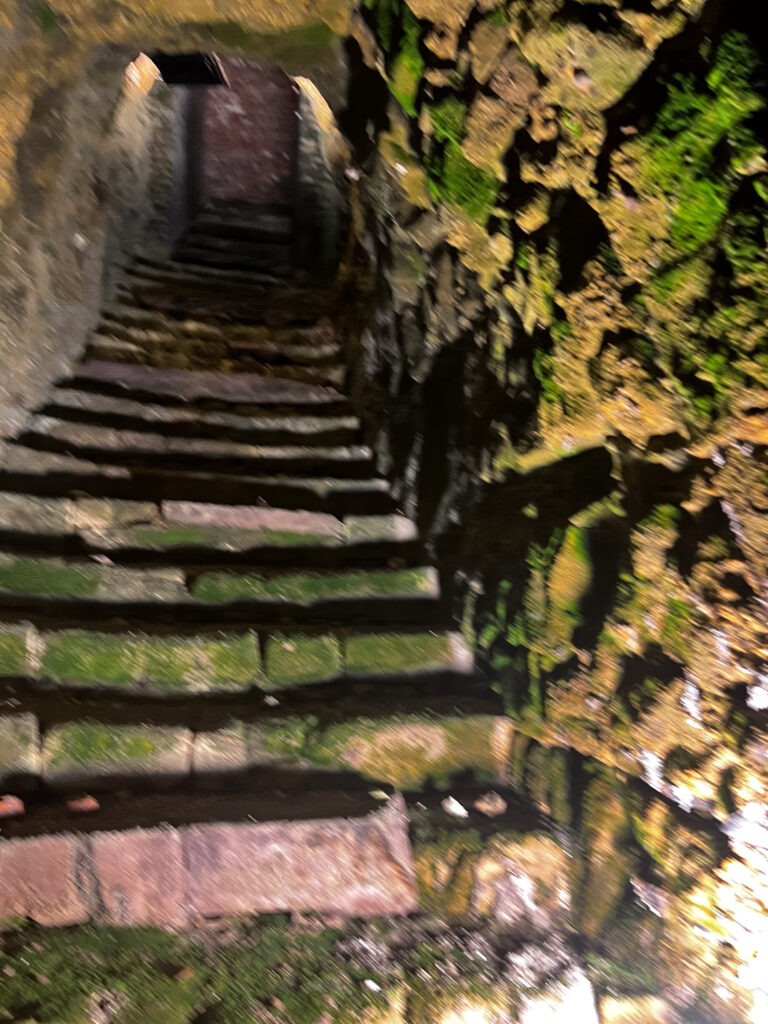
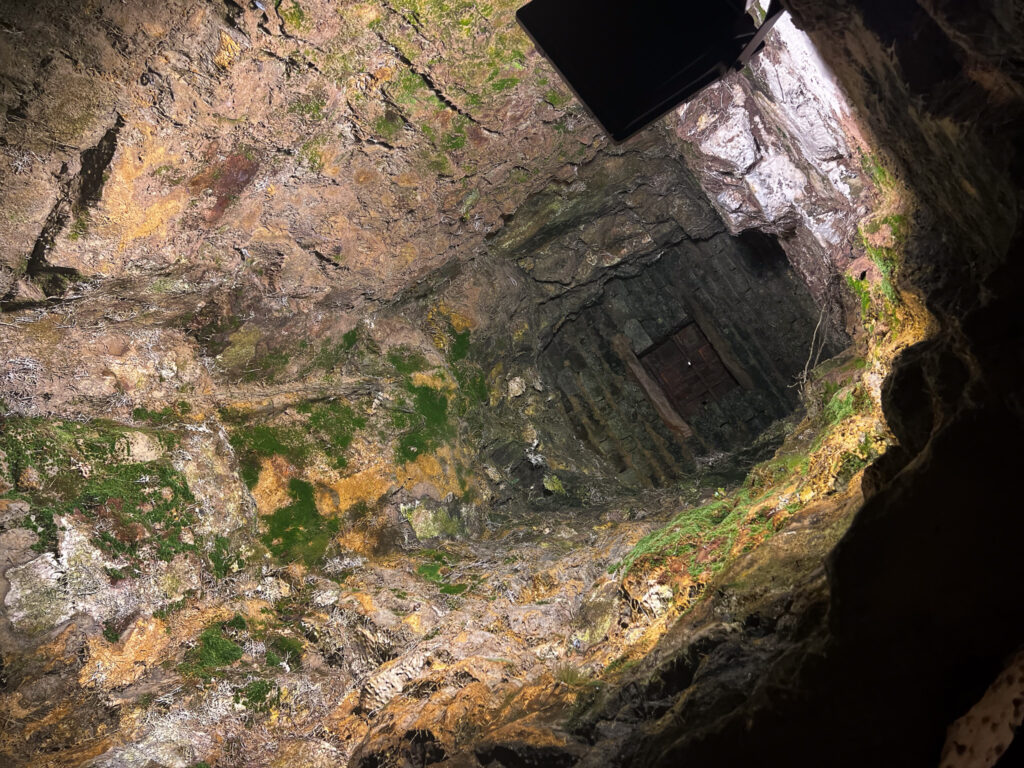

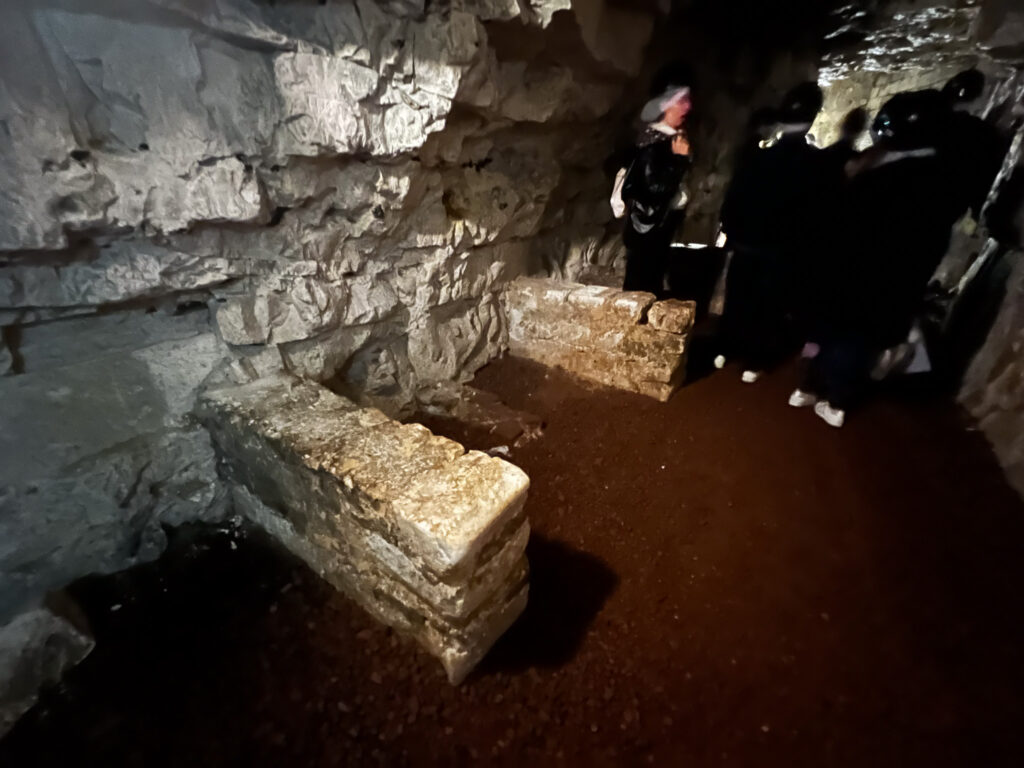
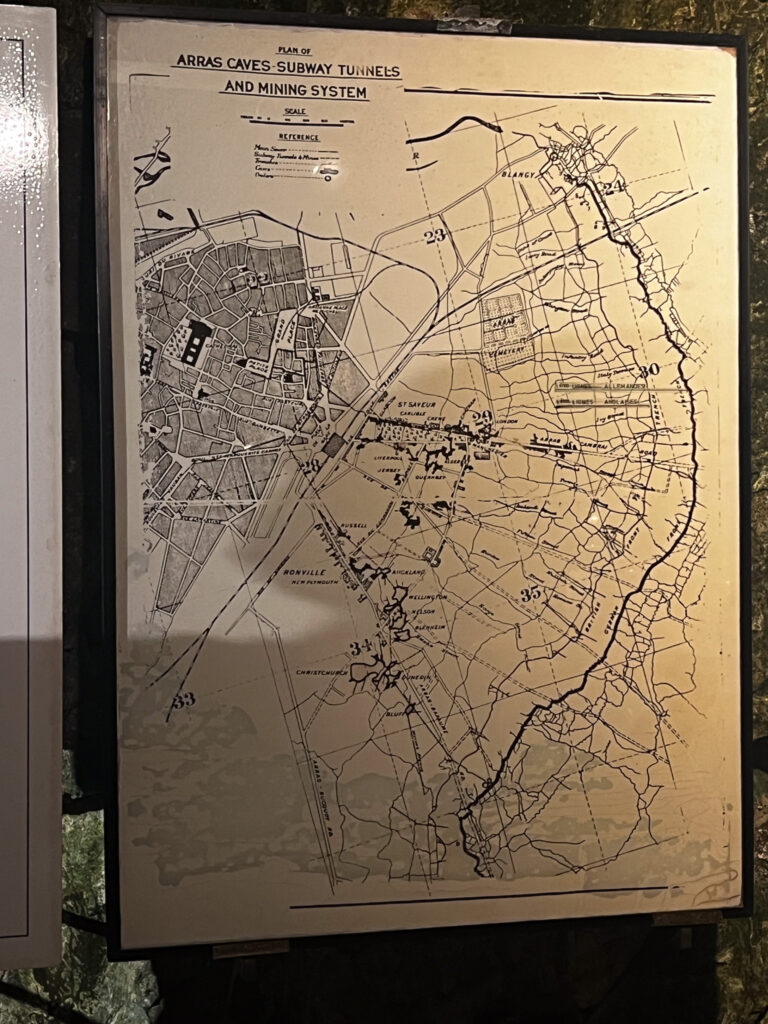
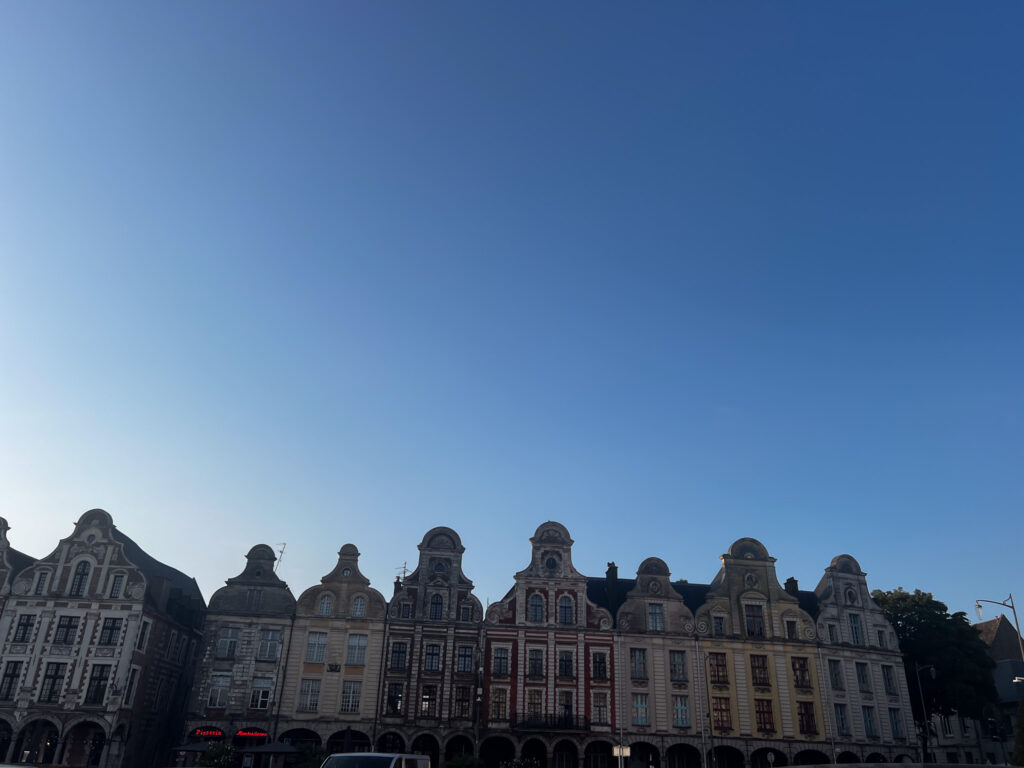
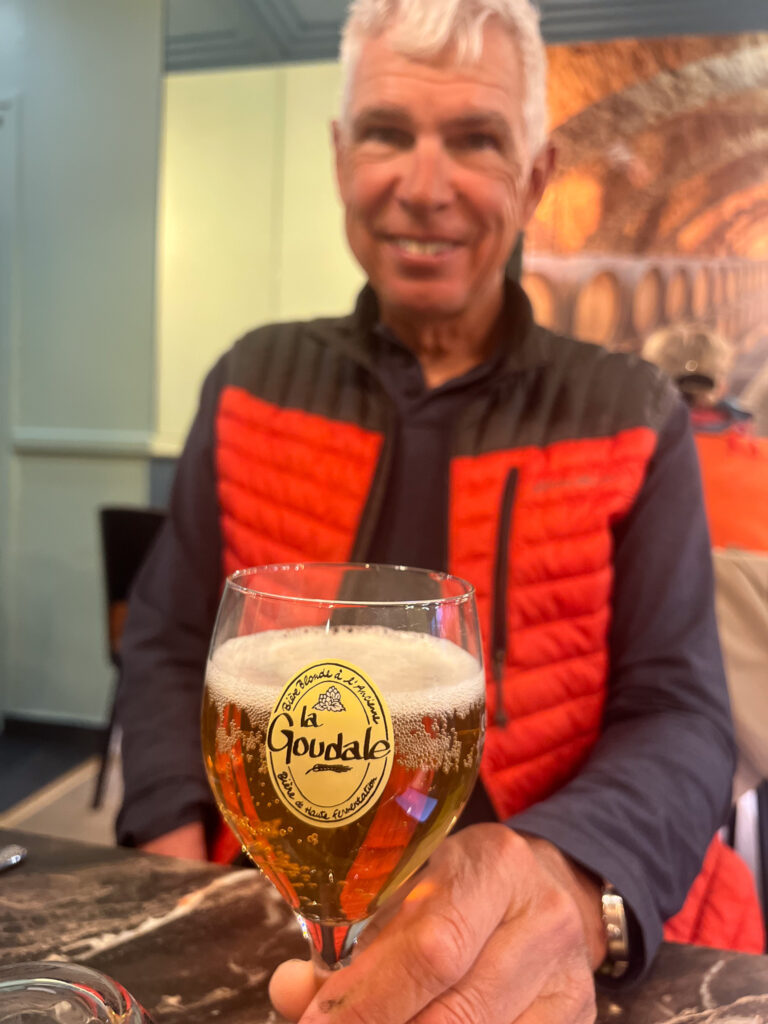

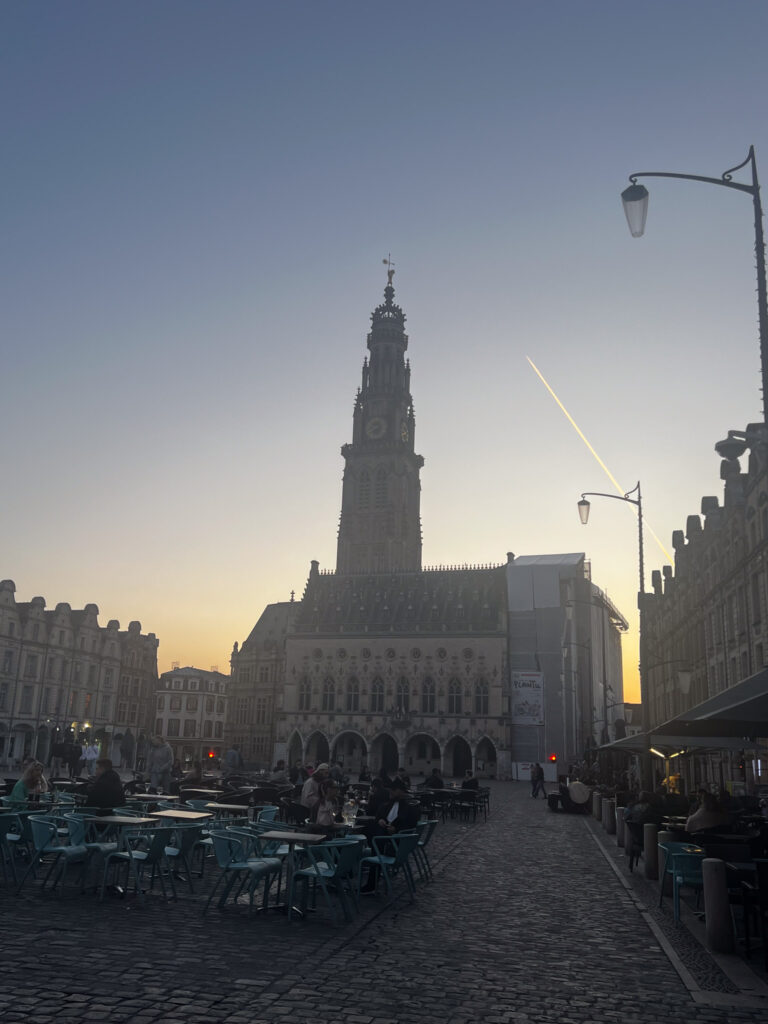


Amiens…bigger than two Notre Dames. Amazing!
Please let me know if you get this email.
0
0
Hi Paul, YES!
0
0